The Old Cut Diamond Guide
Old Cut Diamonds: Everything You Need to Know About These Classic Gems.
Are you looking for an engagement ring or unique piece of jewelry but want something that carries an air of history and sophistication? The word 'old cut' will often appear when searching for period jewelry. But what exactly does it mean? And how are old cut diamonds different from modern ones? As one of the most trusted estate jewelry resources, we can advise you on what makes old cut diamonds unique and why these magnificent masterpieces are so distinct.
What Are Old Cut Diamonds?
In the past, all diamonds were hand cut by artisans responsible for every detail of the diamond’s appearance prior to substantial breakthroughs and cutting advancements in the 1800s. Two of these classic diamond cuts, known as Old Mine Cut and Old European Cut, are desirable because of their hand-finished beauty; an artist would have spent hours polishing the diamond by hand to get the right brilliance.
While modern brilliant cut diamonds are cut to produce the most sparkle, generating a dazzling, white hue when light enters the diamond and bounces back through the top facet of the gem, the charm and personality of an old cut diamond can be just as captivating. An antique cut diamond is uniquely 'scintillescent', its larger facets reflecting often softly attractive with a delicate shimmer. An antique cut diamond's brilliance may be more profound and warmer, with a glistening color that enthralls and pulls the eye toward the stone.
A hand cut diamond is fantastic for an engagement ring because of its unmistakable appeal as a piece of history with a unique look. It is truly a one-of-a-kind piece that’s more than jewelry—it's art.
Popular Types of Old Fashioned Diamonds
Shaping old cut diamonds relied fully on the jeweler's expert vision for perfecting a rough stone from the earth into a specimen of beauty and grandeur. Today, diamonds are cut to optimize a diamond’s brilliance and color. Therefore, the evolution of diamonds from antique and vintage cut diamonds to the modern round brilliant cut with which we are familiar today, occurred over centuries as cutting advancements were made. Let's take a closer look at our guide to Old Cut Diamonds:
French Cut (1400s)
French cut diamonds date from the early 1400s, gaining immense popularity in the 17th century, when they were prized by royalty and nobles. After being overshadowed by the first brilliant cut diamonds (Old European Cut), French cut diamonds re-emerged in favor during the Art Deco period due to their strong geometric design. While the name's origin isn't entirely known, the most frequent belief is that the cut was more prevalent in France than in other countries.
French Cut stones are easily distinguished from other old cut diamonds due to the distinctive “cross” pattern that sits atop a square or rectangular crown. The shape is a direct progression from the first table cut diamonds, followed by the Mazarin and Peruzzi cuts of the 1600s and 1700s, respectively.
As diamond cutting techniques advanced, so did the precision of facets exhibiting more brightness than previous, simpler cuts. Additional facets were added to these rare cut diamonds, transforming them into considerably more fiery stones.
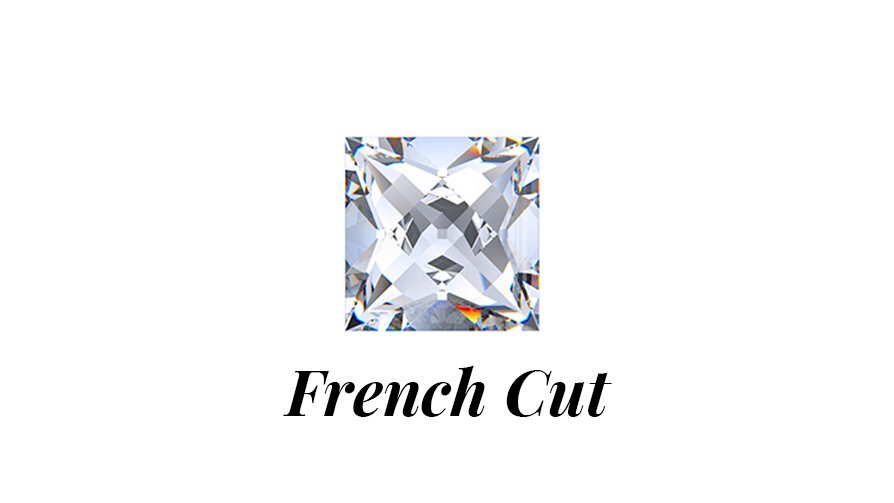

Rose Cut (1500s)
Popular during the Georgian and Victorian periods, the rose cut diamond dates back to the 1500s and is shaped like a rosebud with anywhere from 3 to 24 top facets. Like other antique diamond cuts, they were cut by hand and aimed to shimmer in candlelight.
The flat base of a rose cut diamond is one of its most remarkable features, differentiating it from the standard 'Brilliant Cut' diamonds we’re familiar with today. This lack of a pavilion, the pointed base seen on most diamond cuts, is what differentiates it from other antique cut diamonds.

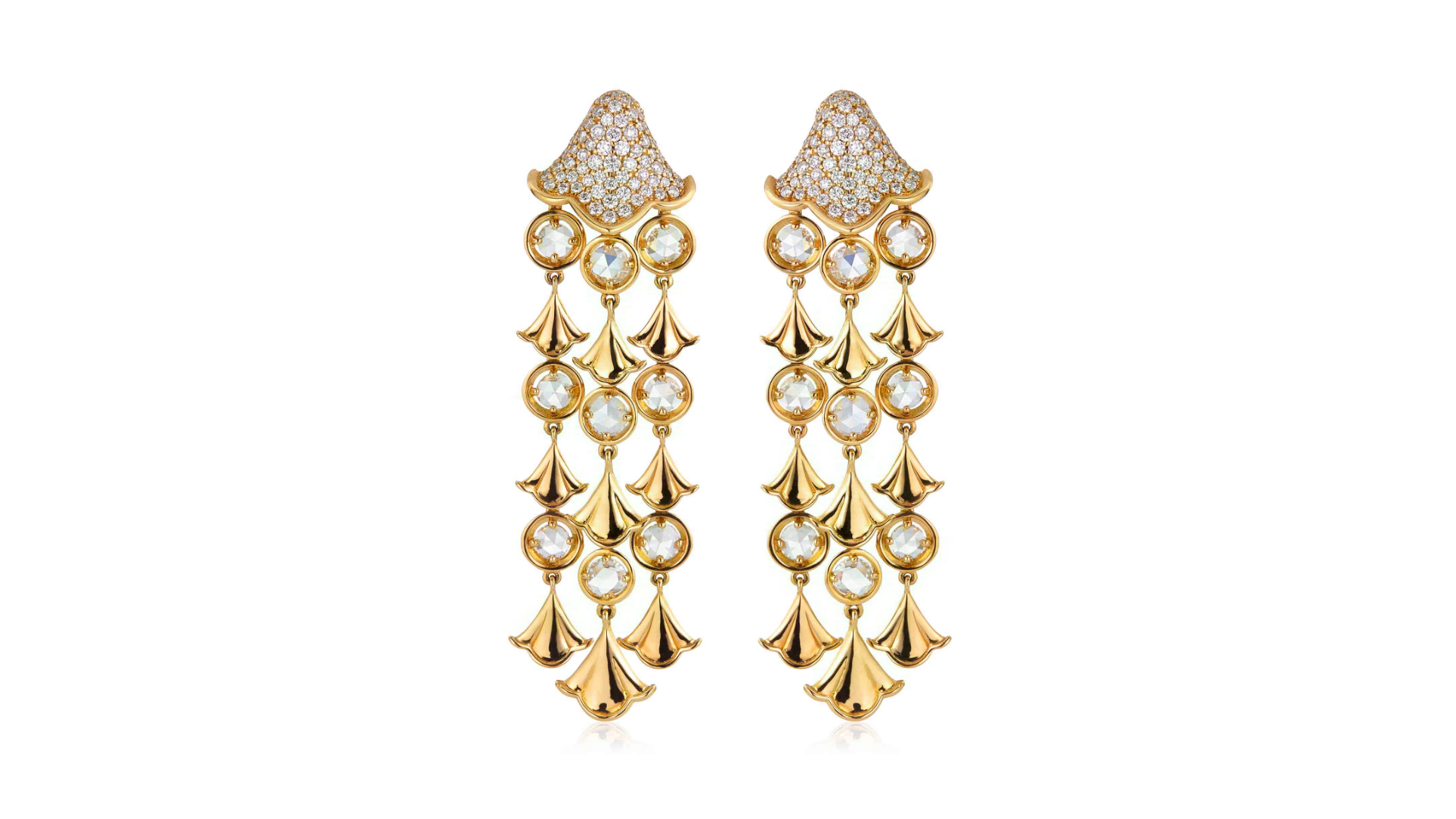
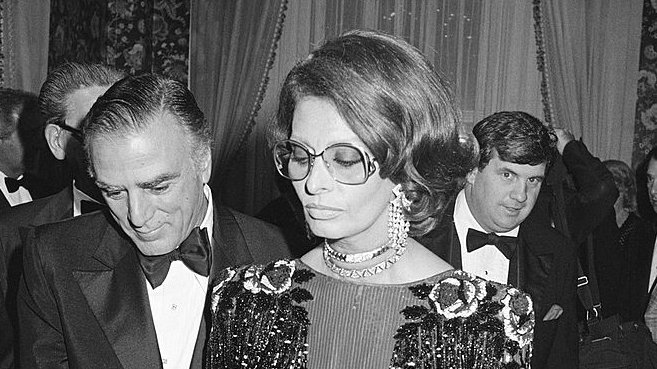
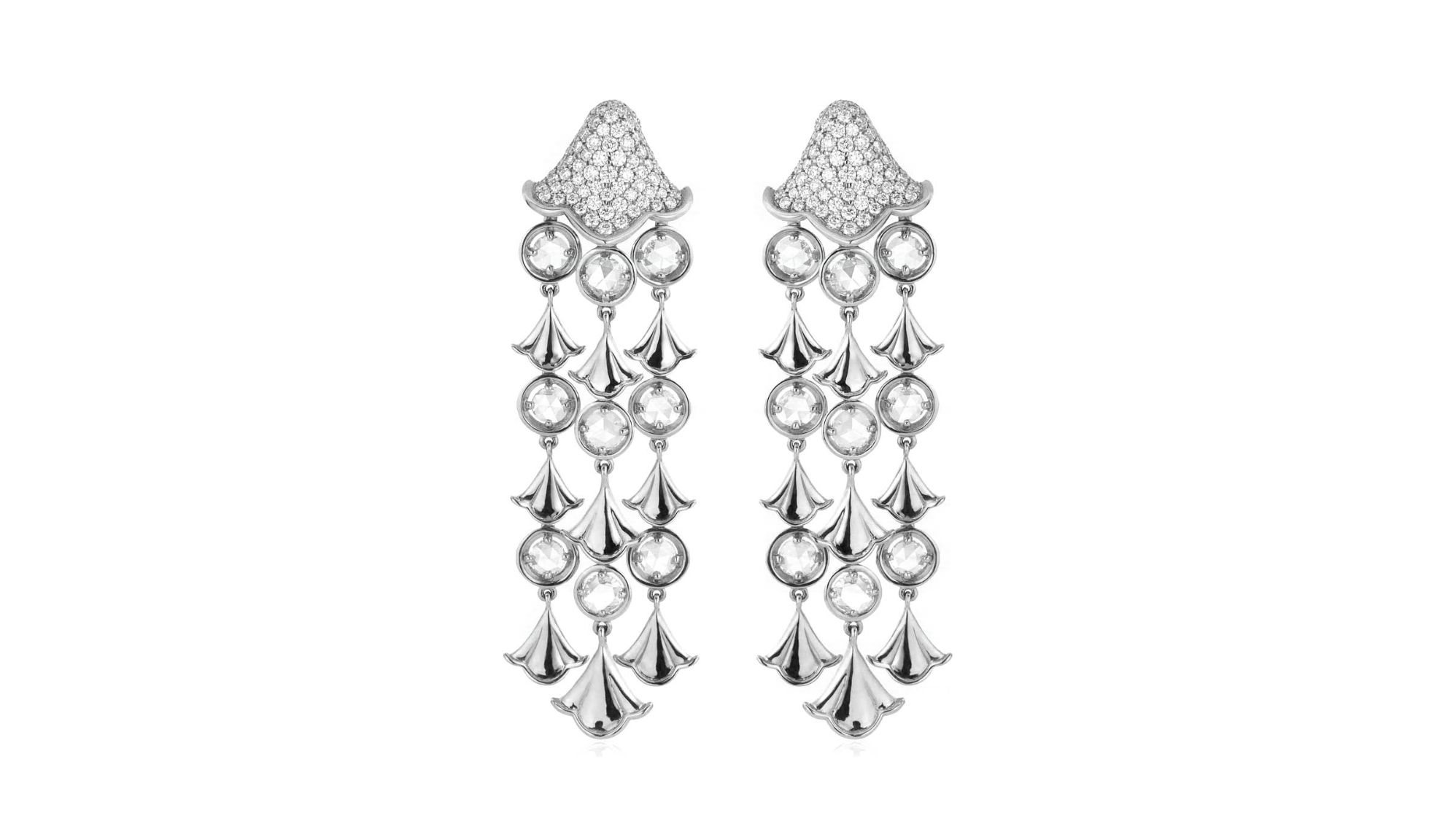
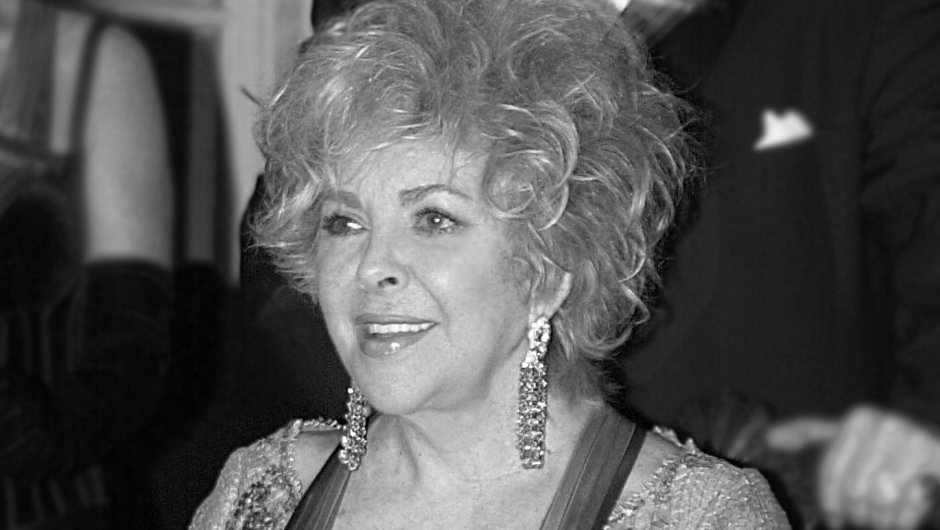
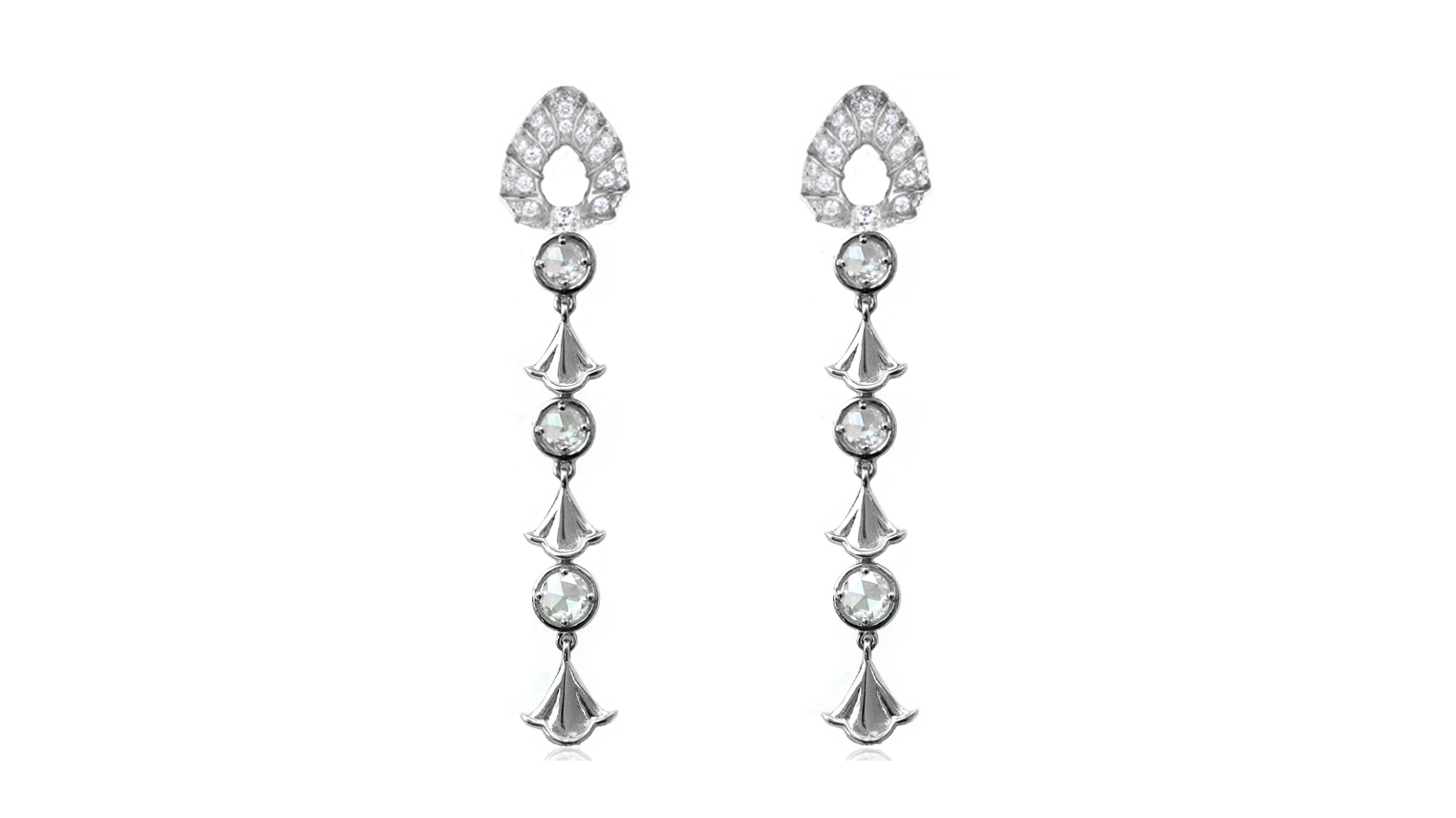
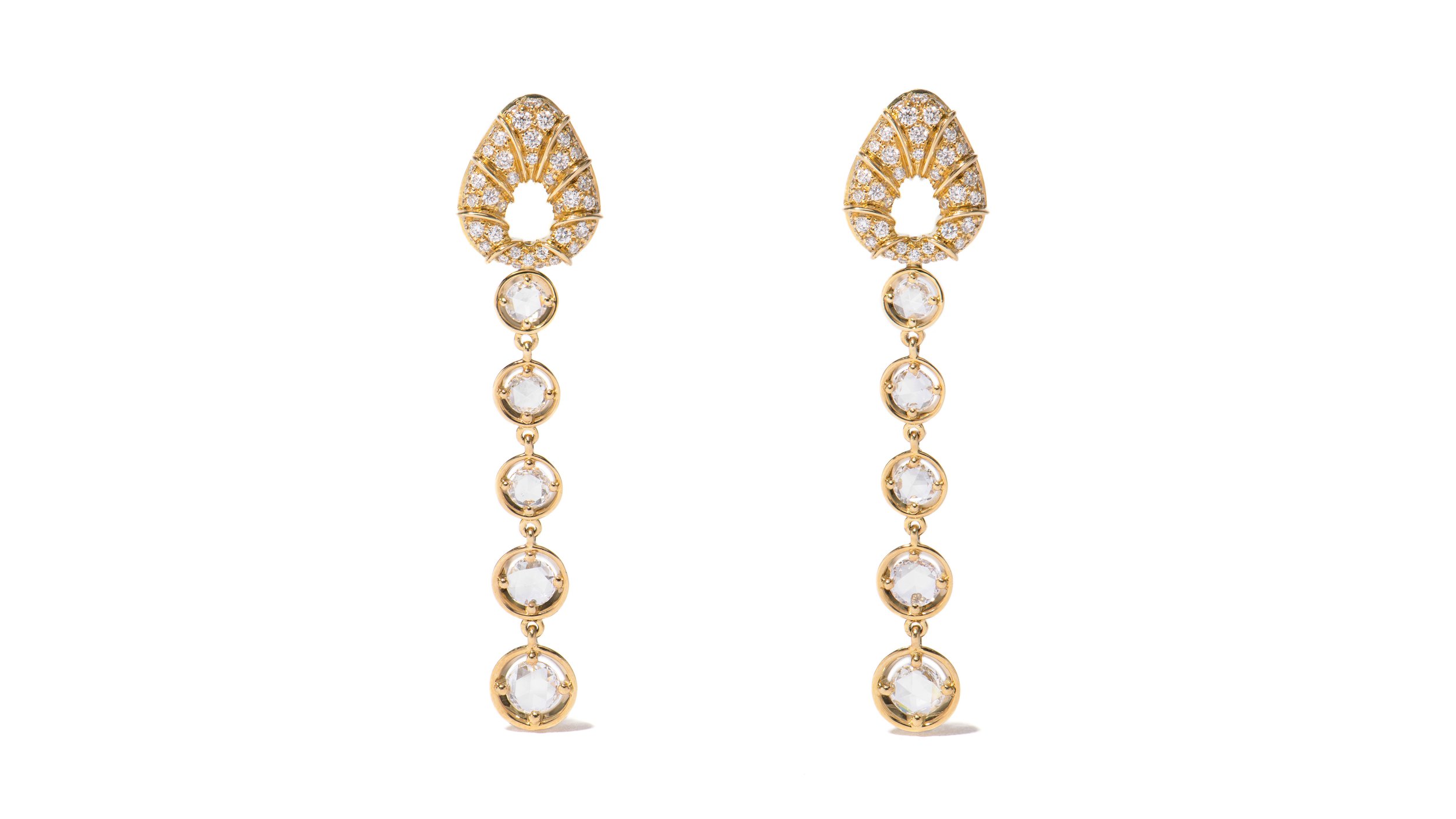
To inquire about our Rose Cut diamond jewelry, contact Windsor Jewelers, Inc. at 212.262.0500 or info@windsorjewelers.com.
Mazarin Cut (1650s)
The Mazarin cut was created in the mid-1600s by the jewel-loving Italian-turned-French Cardinal, aptly named Jules Mazarin. His personal collection of 18 exceptional gems became part of the French crown jewels, one of which, The Grand Mazarin, sold at Christie's Geneva for $14.3 million in 2017.
Evolving from the single cut, the Mazarin cut has 17 crown facets and 17 pavilion facets, for a total of 34. With the increased number of facets, old cut diamonds were beginning to sparkle more than ever and move toward today’s standardized brilliant cut.
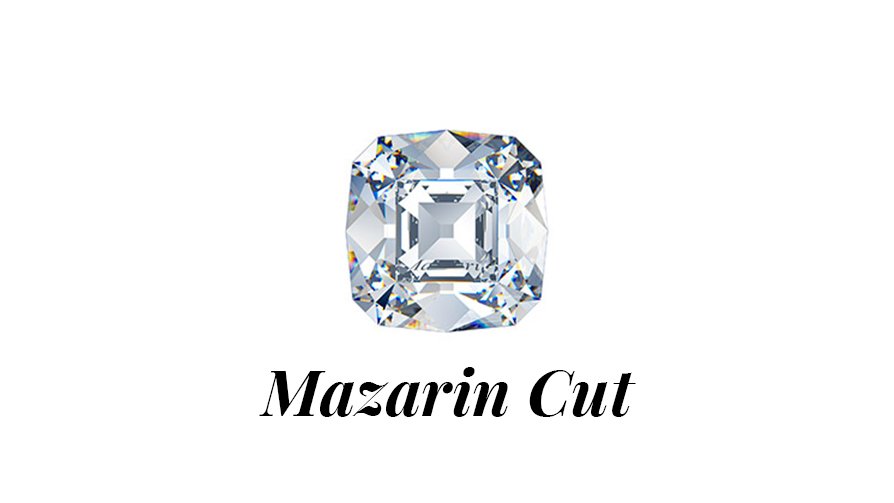
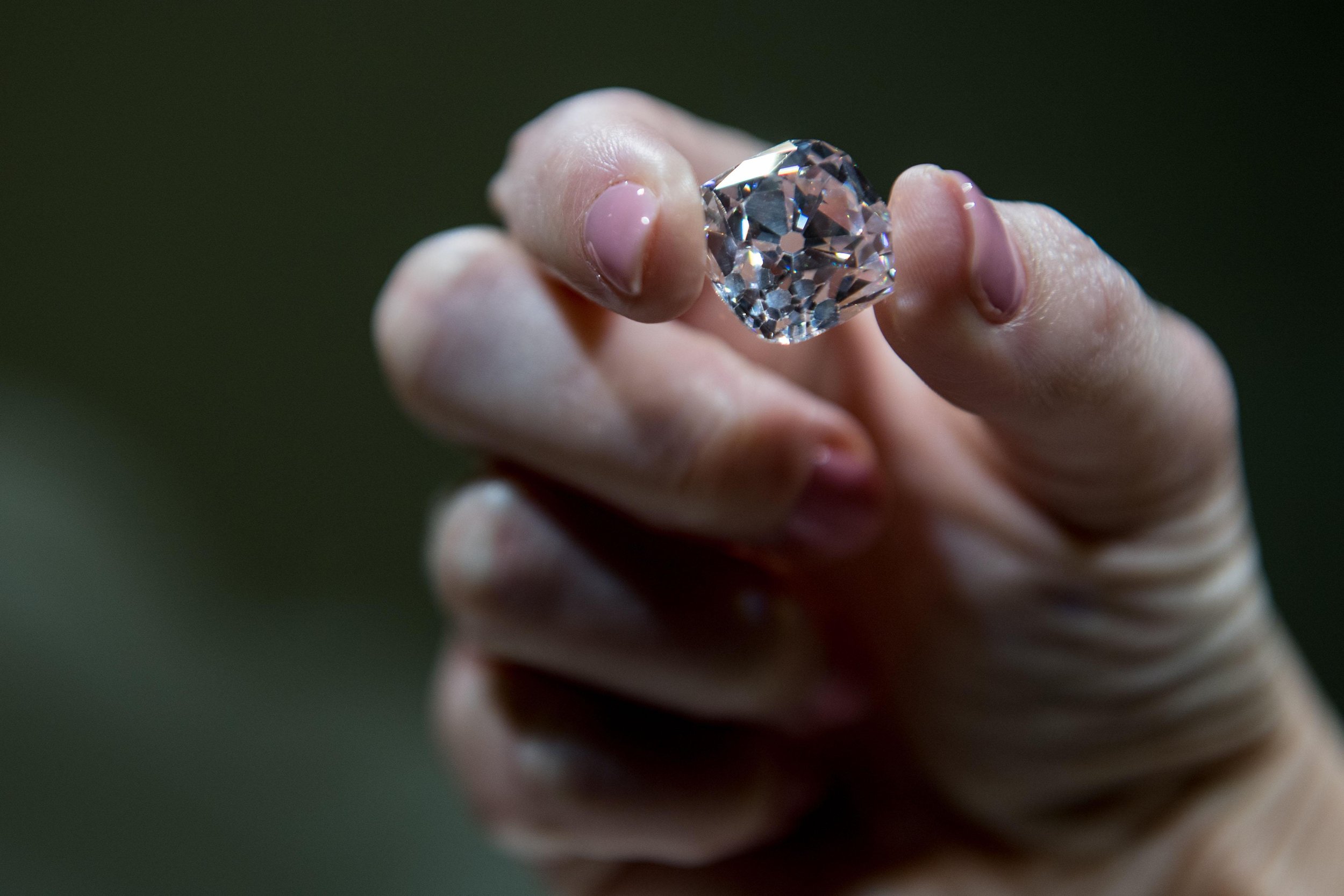
The Mazarin cut was created in the mid-1600s by Italian-turned-French Cardinal, Jules Mazarin. The famous The Grand Mazarin sold at Christie's Geneva for $14.3 million.
Peruzzi Cut (1700s)
What came next was more revolutionary and became the first brilliant cut diamond, paving the way for the modern round brilliant as we know it today. With 32 facets on the crown and 25 on the pavilion (the lower part of the stone), these 57 facets could now bounce light around the diamond and back to the eye, creating such a display when it moved that it enchanted all who saw it. This cut became known as the brilliant cut from the French phrase “elle brille,” meaning “she shines.”
The genius behind this advancement remains a mystery today. Once referenced in the early 19th century as being the work of Venetian polisher Vincent Peruzzi, no further documentation has been unearthed.
“Peruzzi” diamonds have a rough cushion shape, distinguishable X pattern visible from the table and an obvious antique, hand cut look.
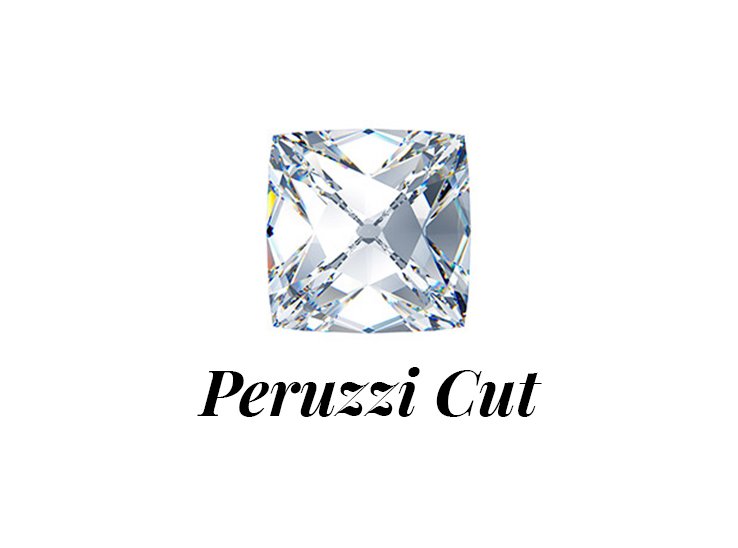
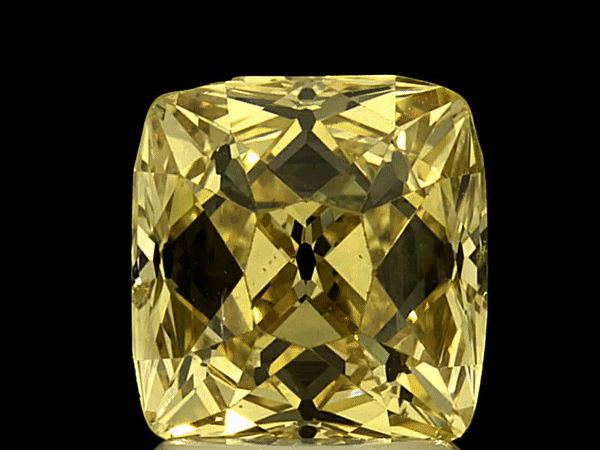
The revolutionary Peruzzi cut included more facets than its predecessors, allowing light to bounce around the diamond and back to the eye. This cut became known as the brilliant cut from the French phrase “elle brille,” meaning “she shines.”
Old Mine Cut (1700-1800s)
From the early 1700s to the mid-1800s, diamonds were primarily mined in South America before South African mines were discovered. The next antique diamond cut to appear through technological advancements therefore gets its name from the depleted mines in which the stones were discovered, known as the “old mines” of Brazil. The Old Mine Cut diamond is cushion-shaped and most commonly seen in Georgian and Victorian jewelry, although it has seen a resurgence in popularity in recent years.
Old Mine Cut diamonds were fashioned by following the octahedral shape of the diamond crystal, meticulously grinding two diamonds together to produce the required shape, and then polishing the facets using a diamond polisher. Dimensions vary from stone to stone due to the form and the fact that the diamonds were handcrafted. As a result, each old mine cut diamond is unique from another.
This cushion cut shape with organic edge distinguishes an Old Mine Cut from its more contemporary counterpart, the Old European Cut. Old Mine Cuts have 58 facets, much like a contemporary round brilliant cut diamond, however it has unusual diamond proportions by today’s standards. The Old Mine Cut often has a smaller table, larger culet, and higher crown, characteristics that create a highly unique appearance.
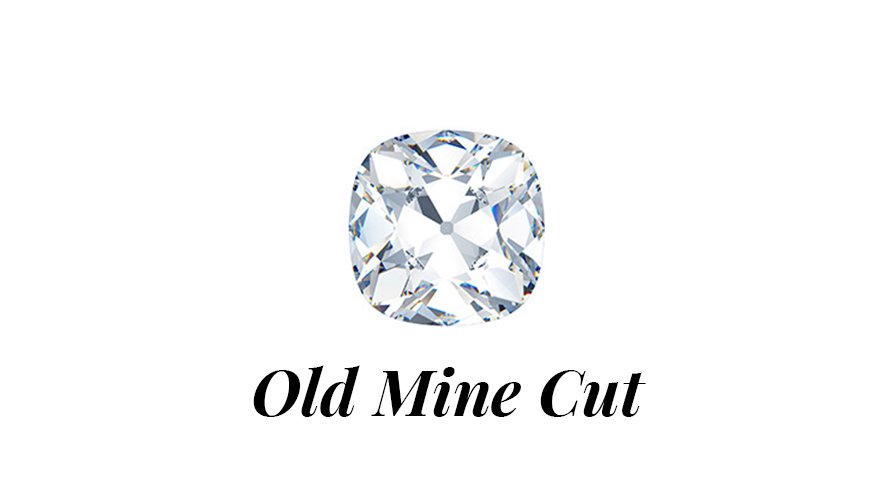
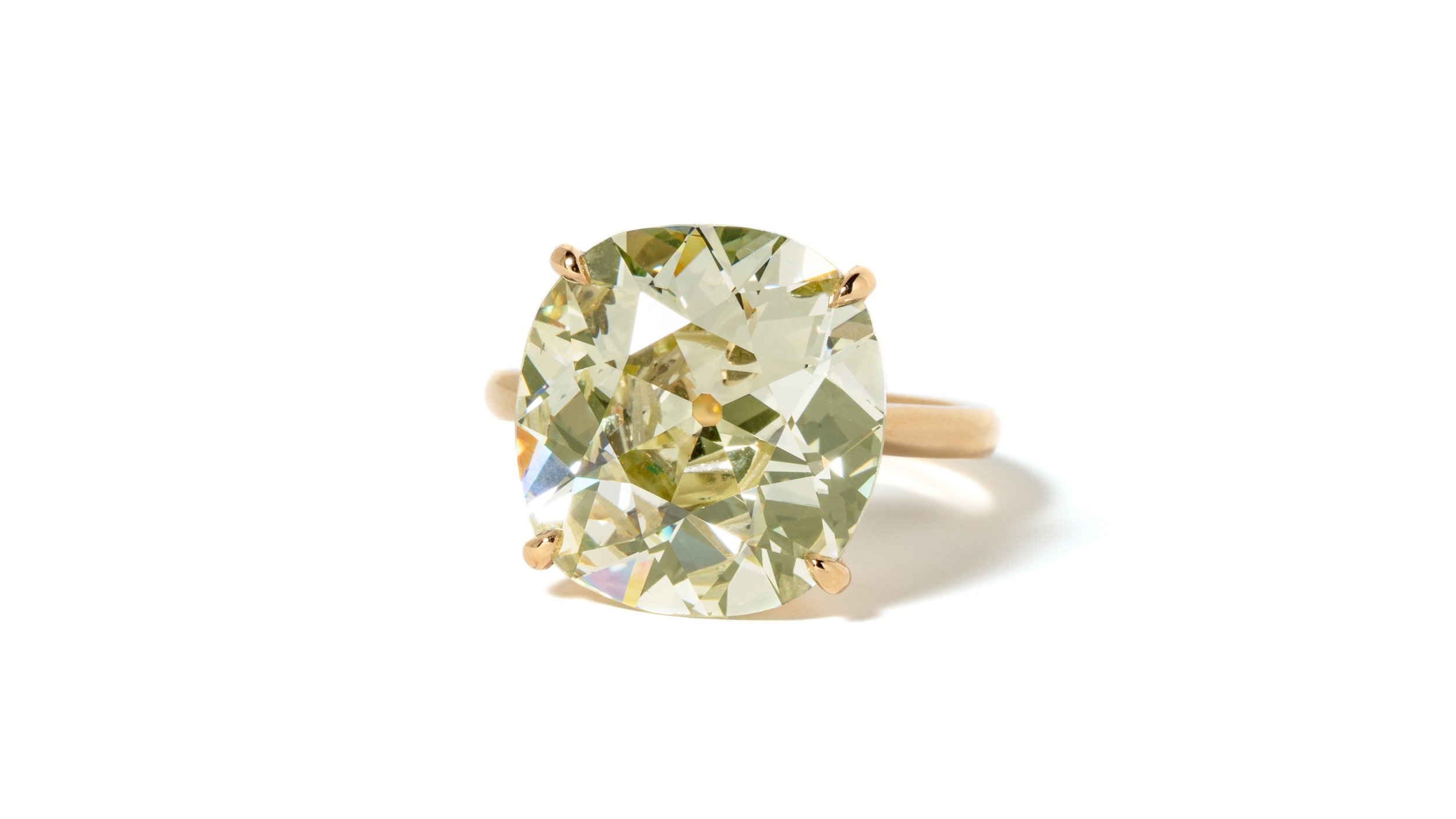

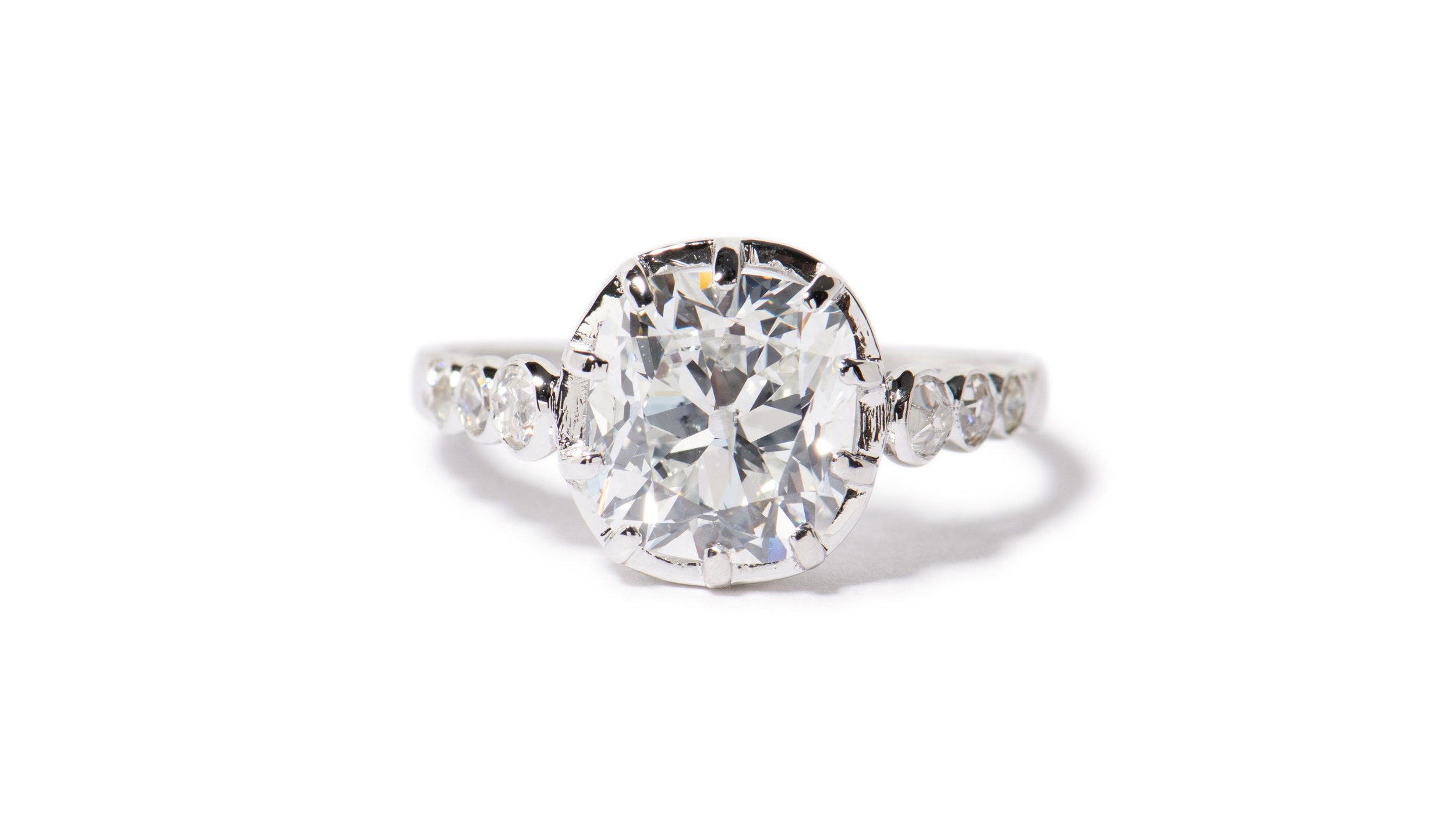
To inquire about our Old Mine Cut diamond jewelry, contact Windsor Jewelers, Inc. at 212.262.0500 or info@windsorjewelers.com.
Old European Cut (late 1800-early 1900s)
Shortly after the African mines were discovered in the late 1860s, the diamond bruting wheel was invented, allowing a cutter to create a circular outline. This development in diamond cutting was the catalyst for the transition from the Old Mine Cut’s cushion shape to the more precise round shape of the Old European Cut.
The Old European Cut, popular between 1890 and 1930, was a major stepping stone to what we now know as the modern round brilliant cut. Similar to other antique diamonds, Old European diamonds were mined and cut for their carat weight and to sparkle in candlelight. Although they also have 58 facets, they don't have the same radiance or typically high color grades as modern brilliant-cut diamonds.
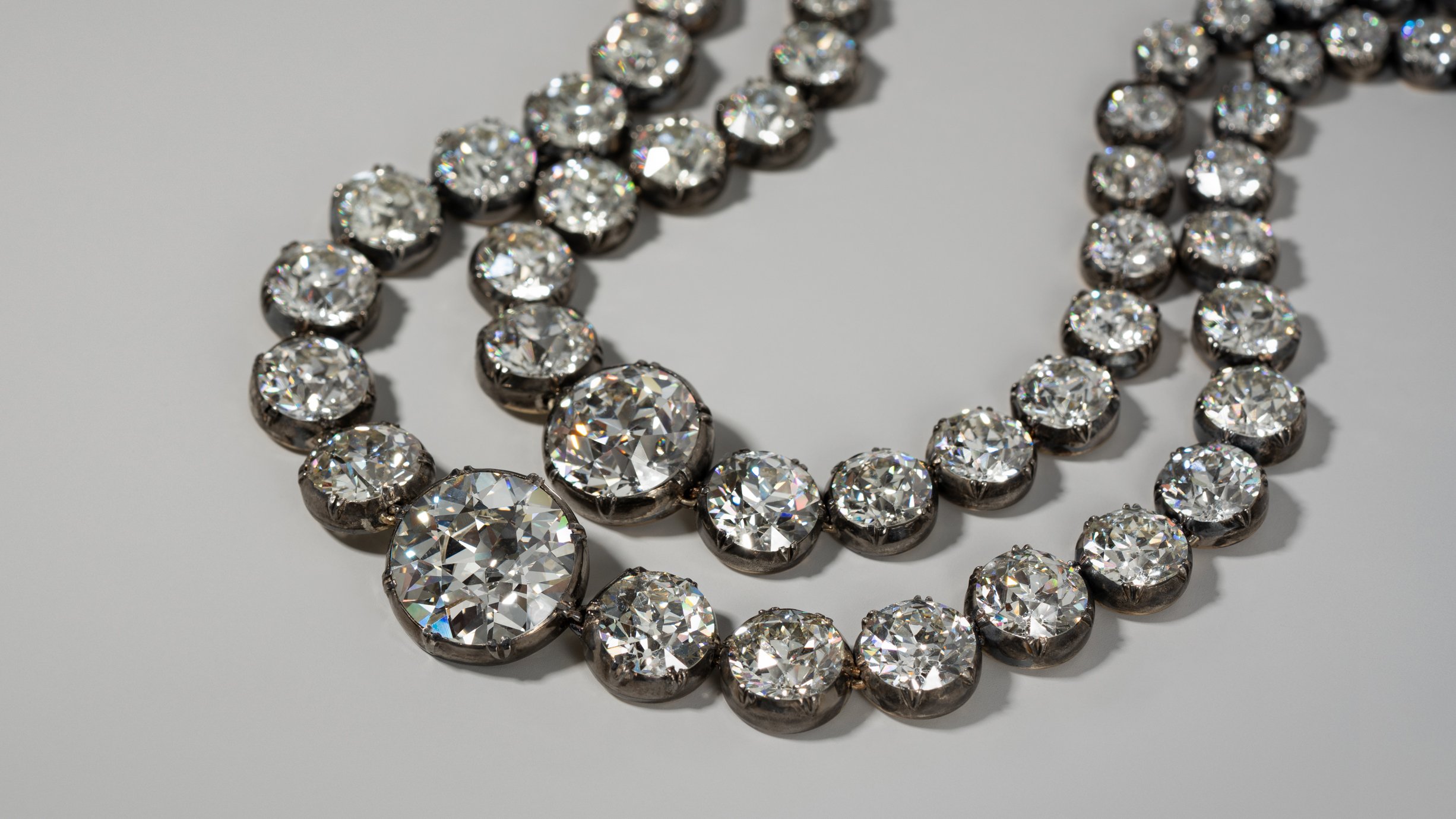
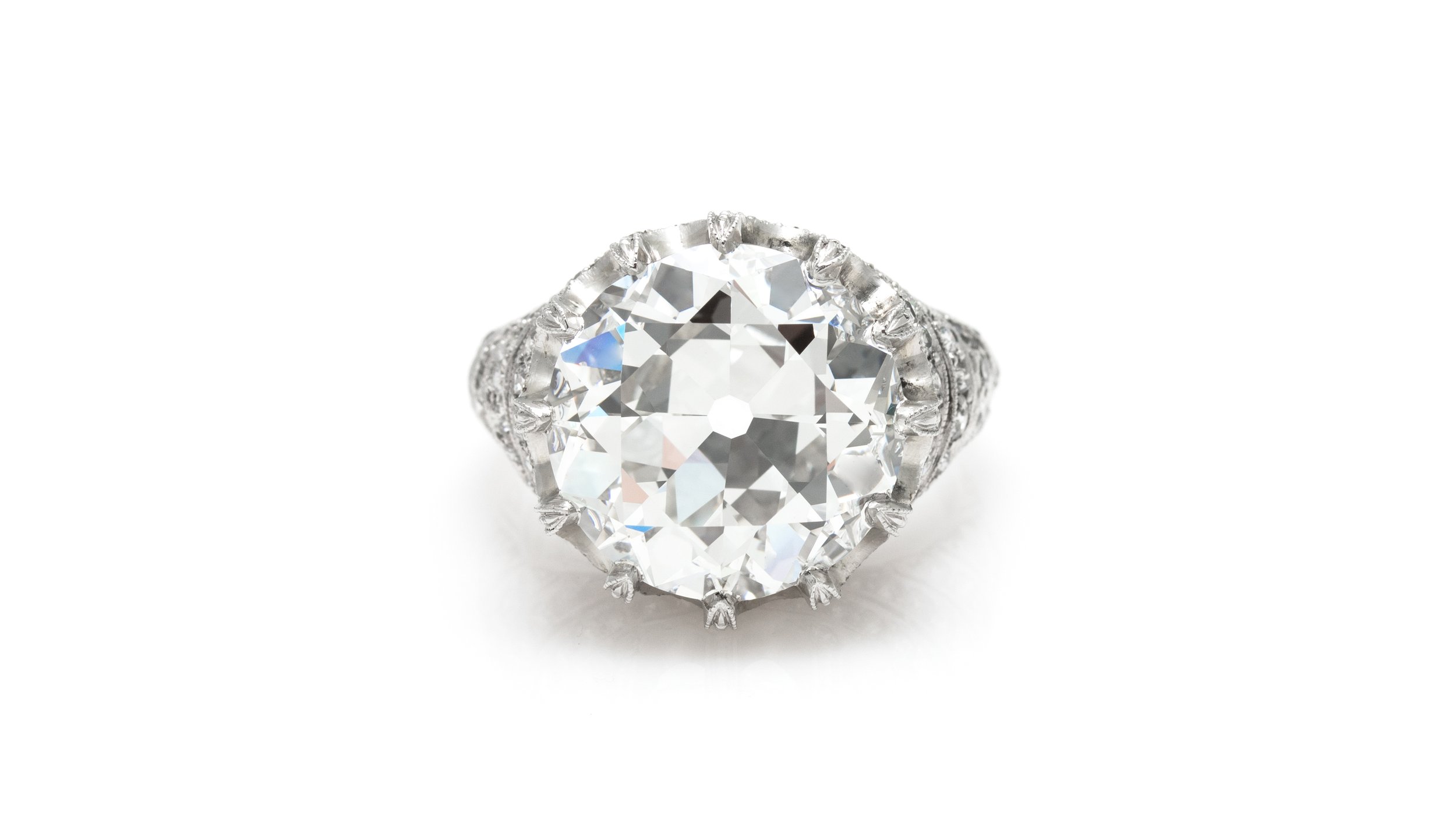
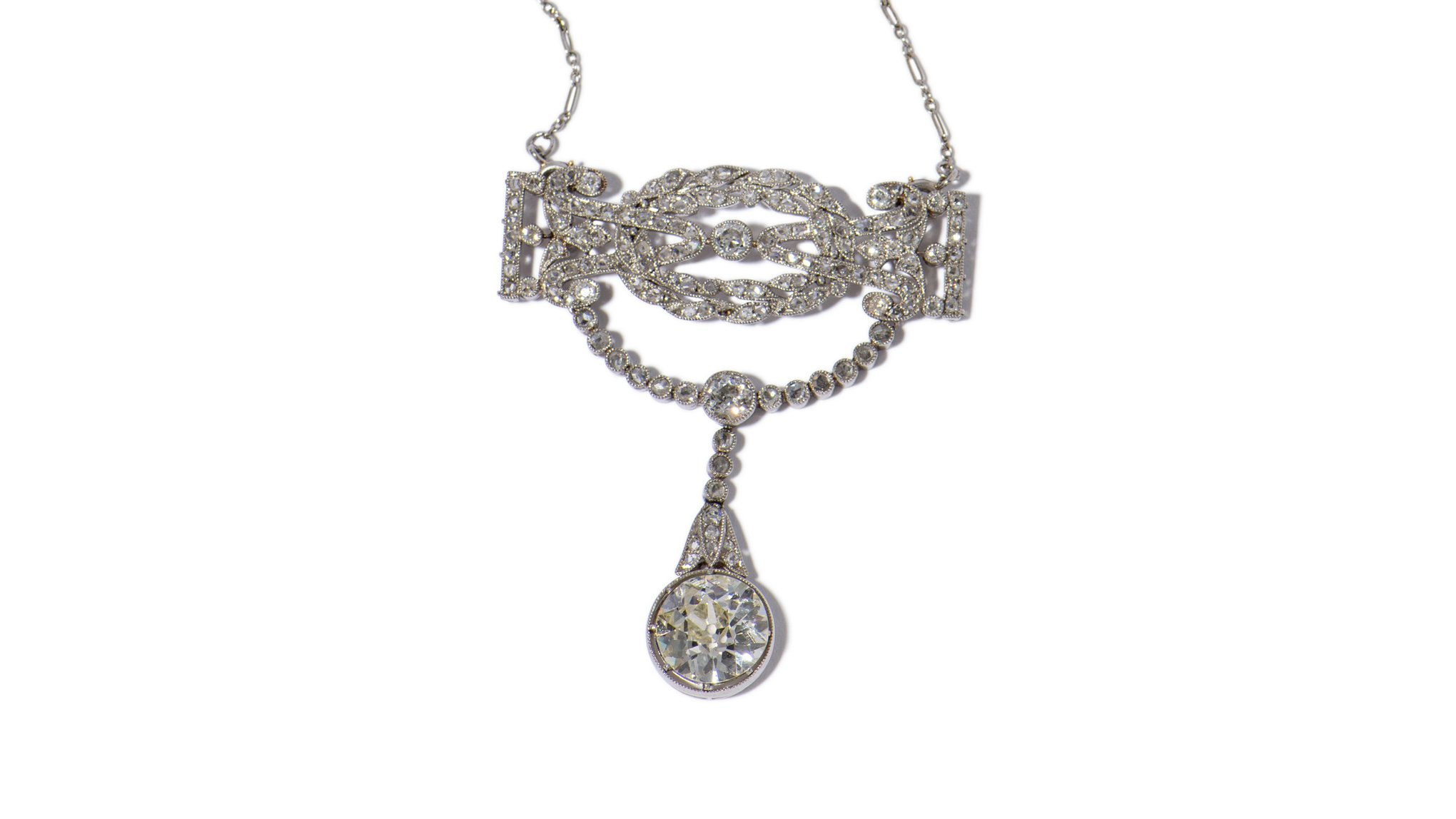
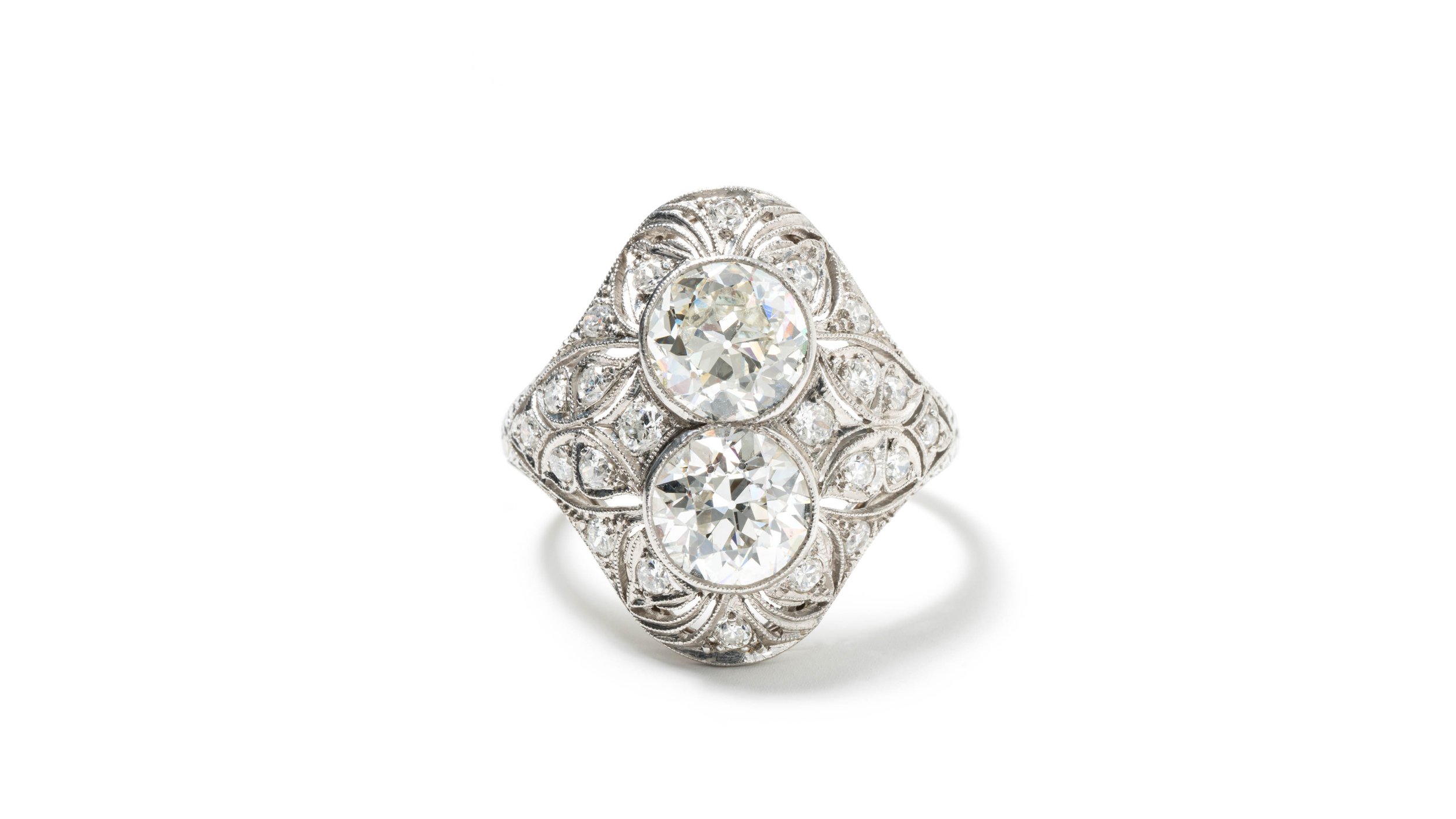
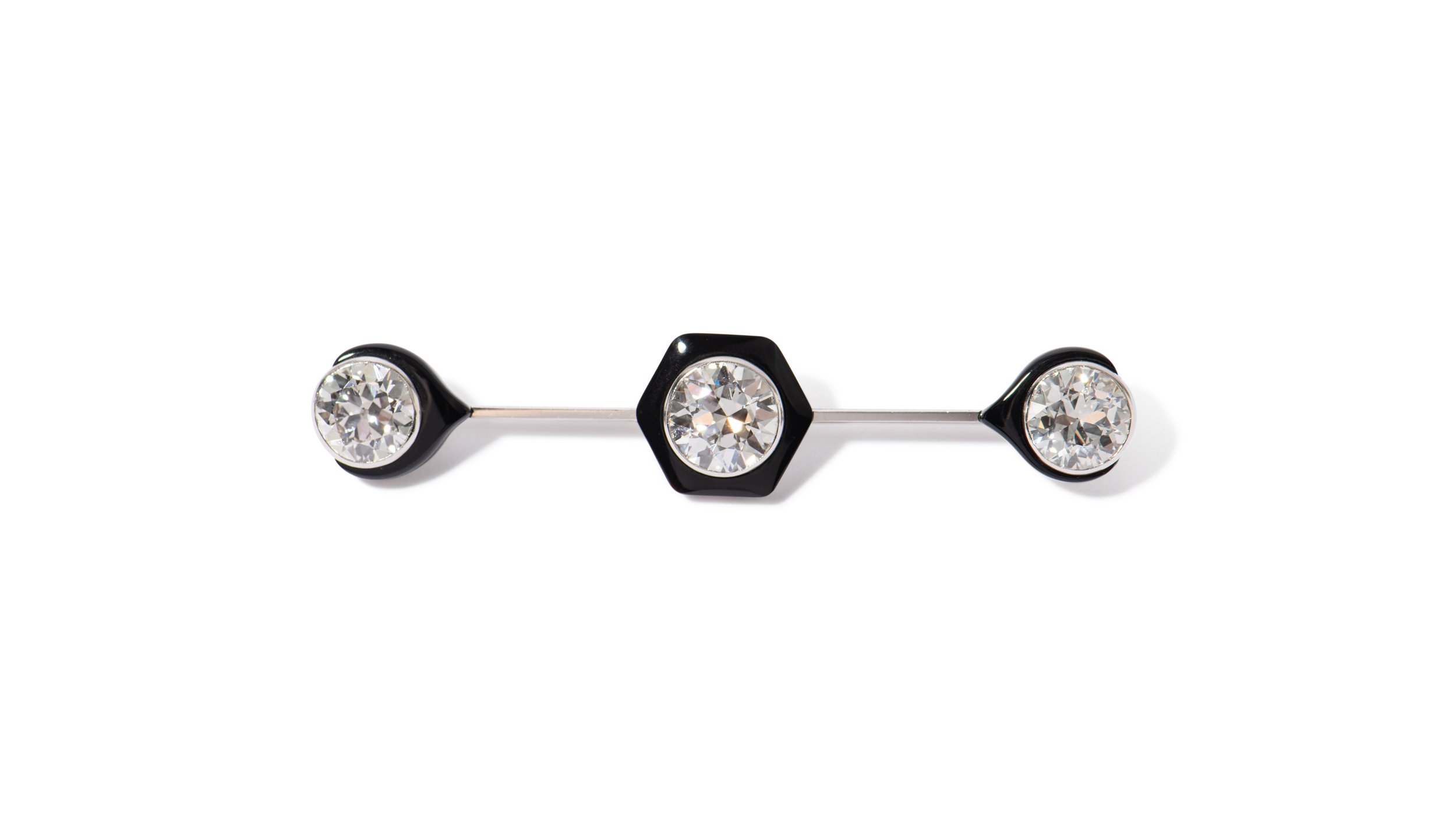
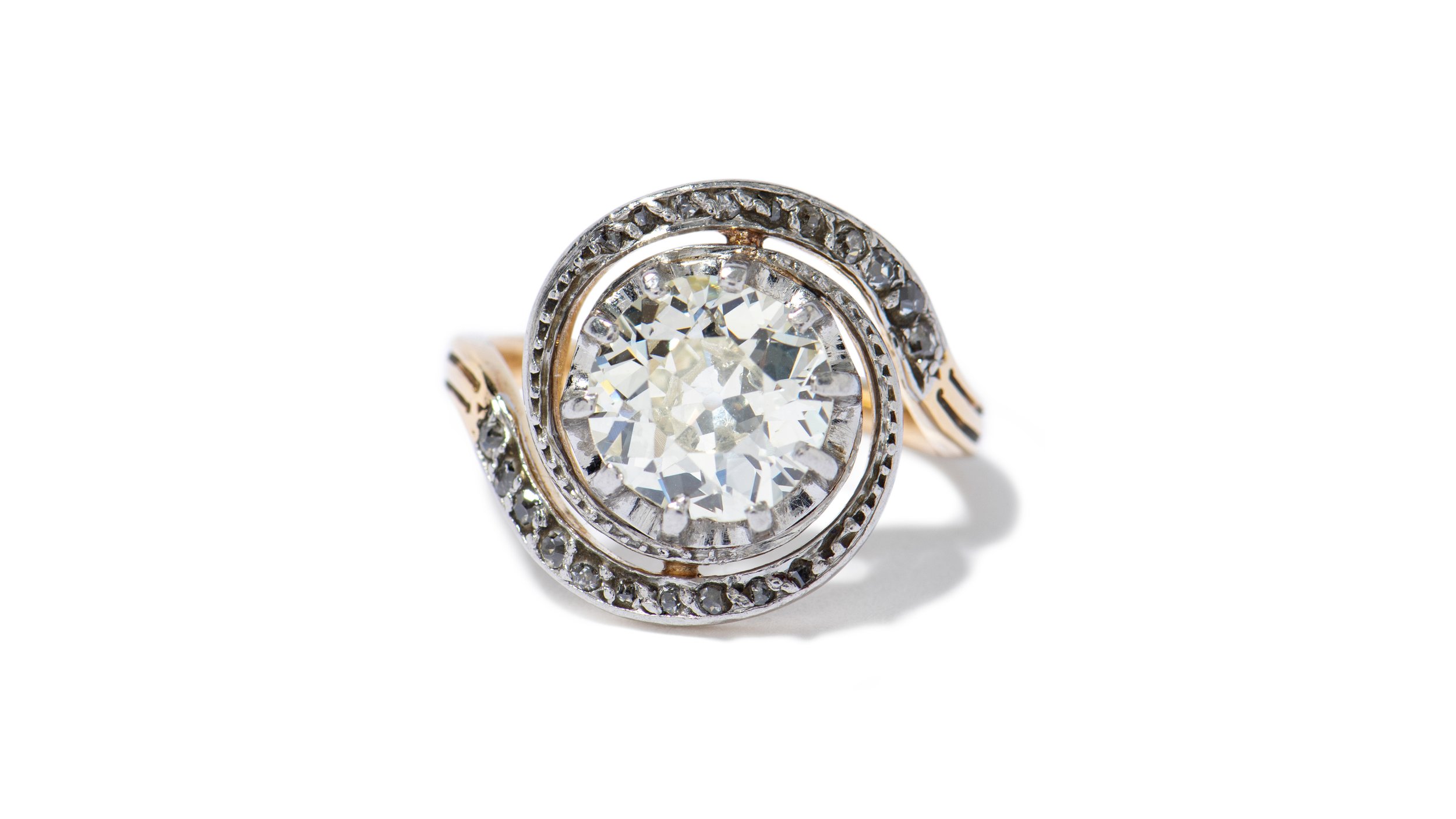
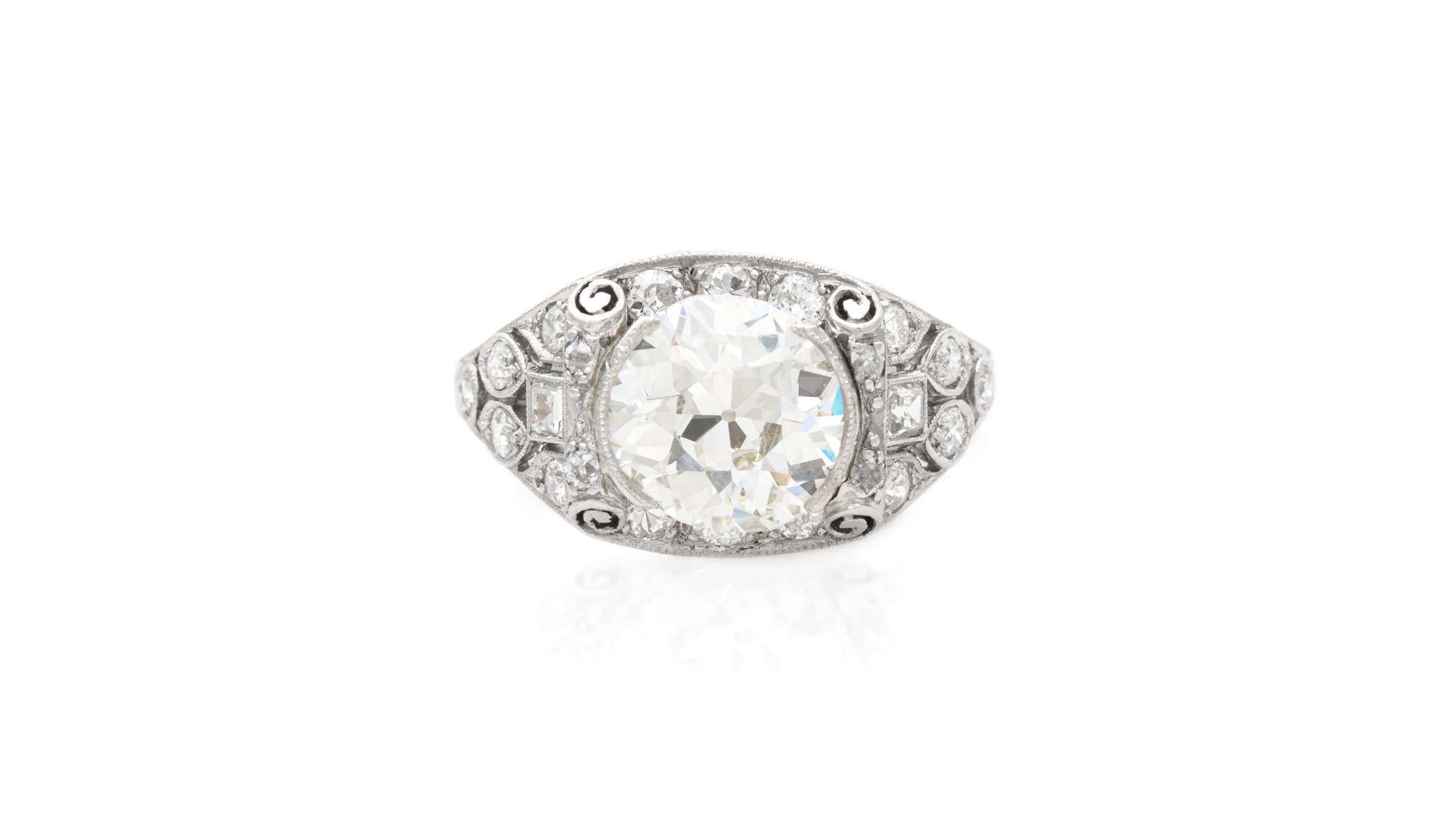
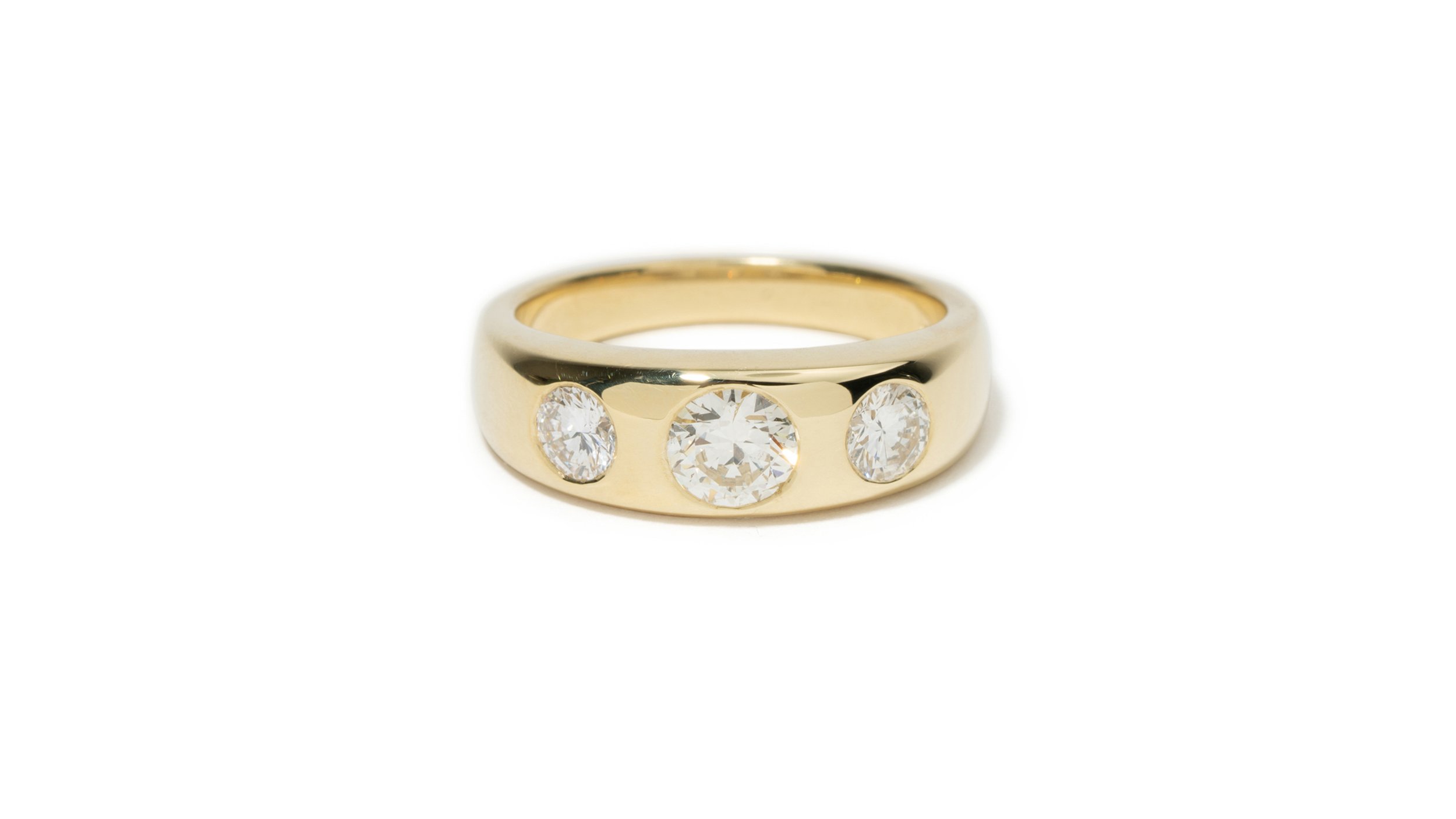
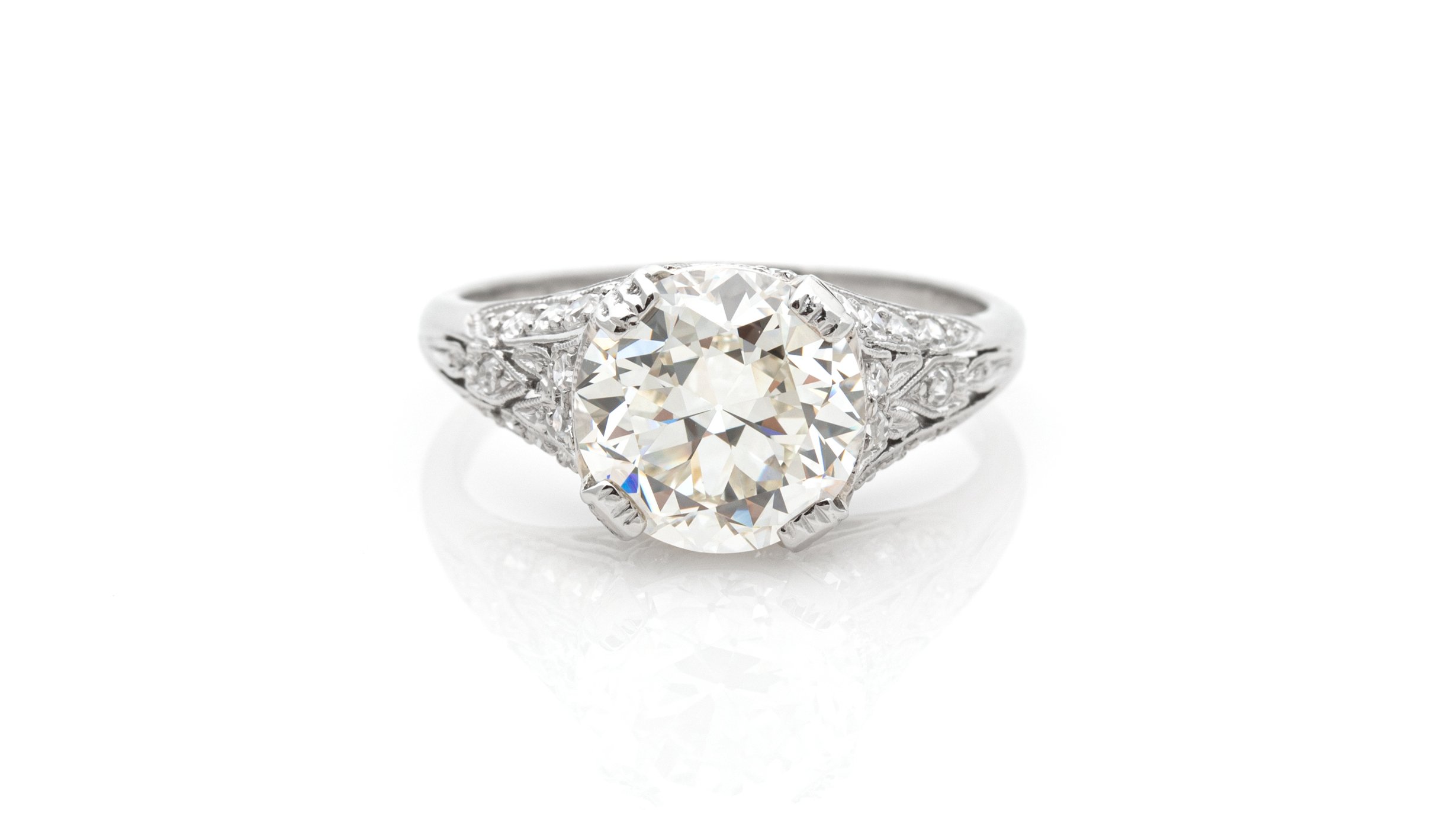
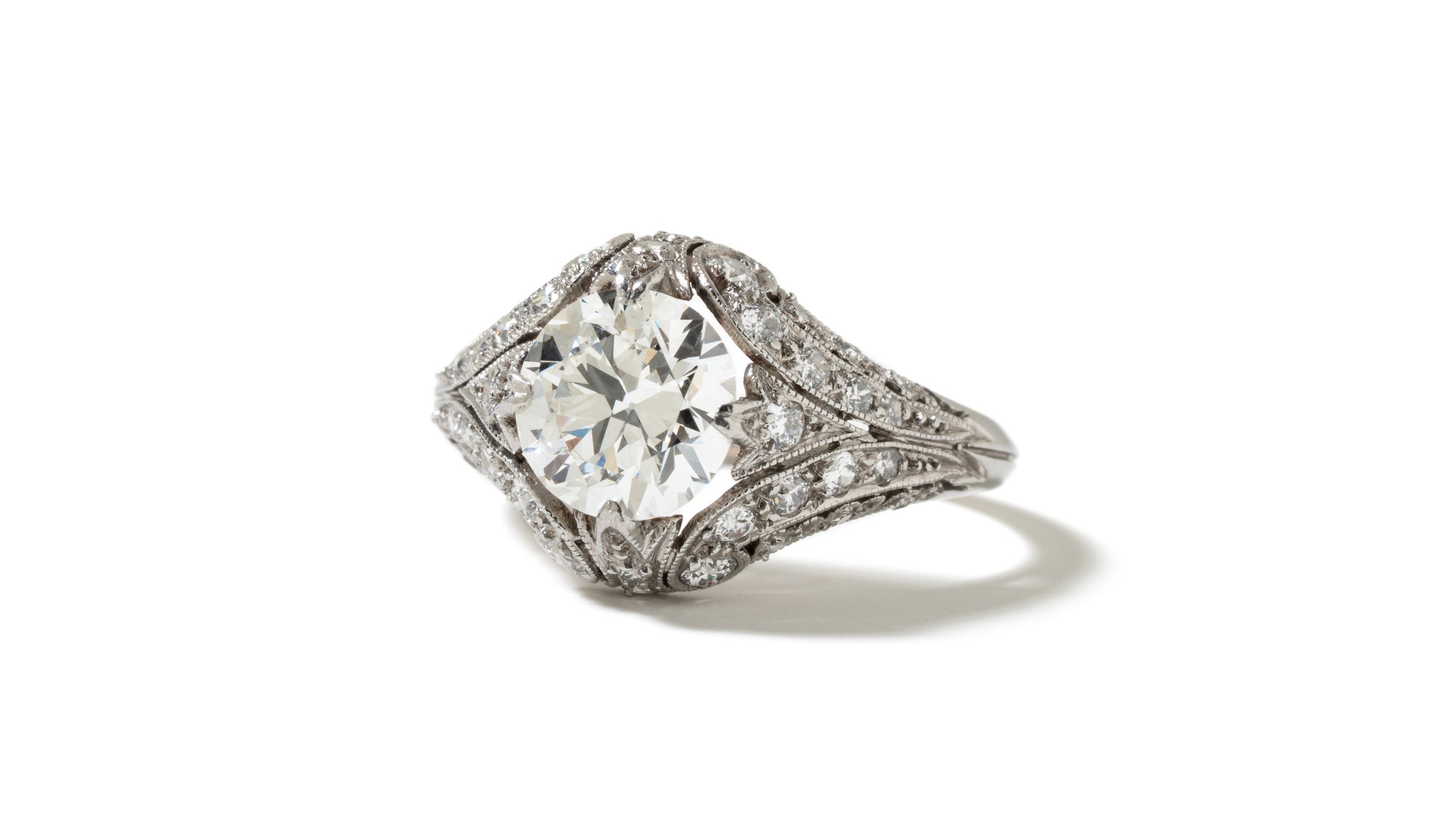
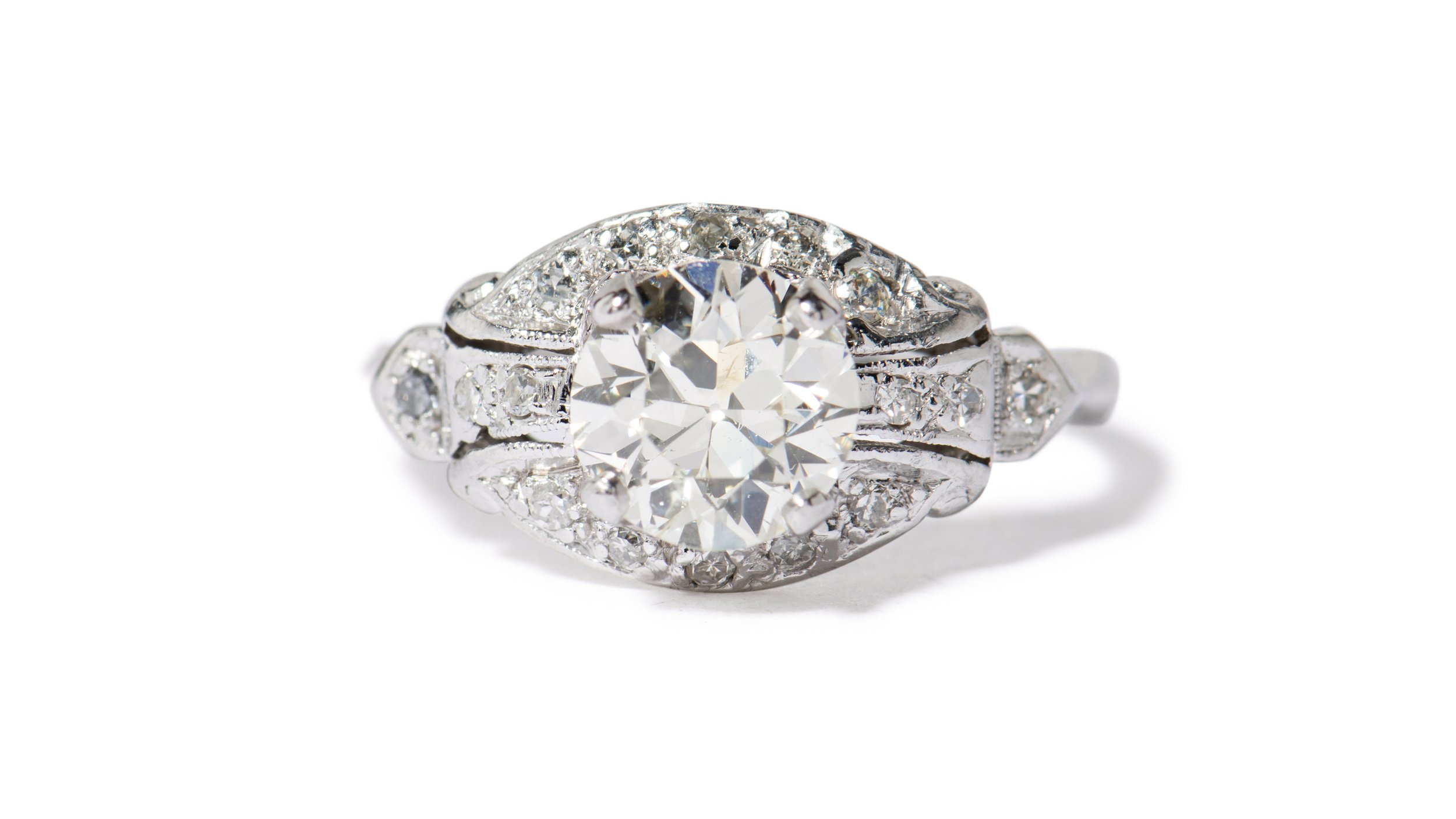
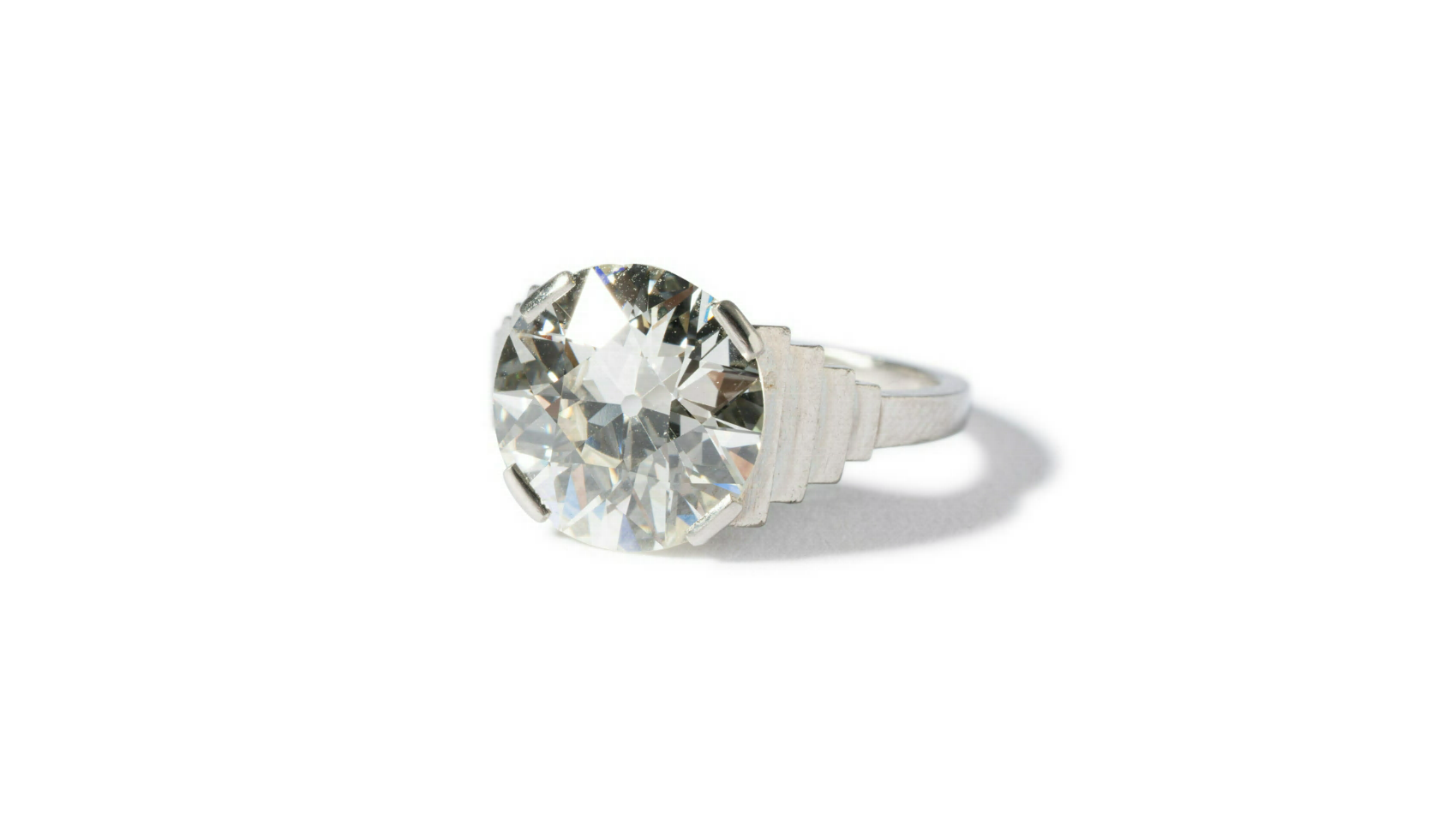
To inquire about our Old European Cut diamond jewelry, contact Windsor Jewelers, Inc. at 212.262.0500 or info@windsorjewelers.com.
Transition Cut (mid-1900s)
In the 1920s, with the emergence of modern technologies, an endeavor to manufacture a uniform round cut diamond began to take shape. The Old European Cut diamond began to "transition" to the transitional cut diamond, also known as Early Modern Cuts or Early American Cuts. These vintage diamond cuts were born out of American cutter Henry Morse’s Boston workshop, who invented the bruting machine.
From the 1930s to the 1940s, transitional cut diamonds were most prevalent in jewelry. The transitional cut diamond is a cross between the chunky facets of an Old European Cut diamond and the precision of today's modern round brilliant. These unique stones have an old-world feel while retaining a modern shape and higher color grades. Rather than being cut to sparkle in candlelight, the transitional cut diamond’s focus was symmetry and uniformity. Short lived, but incredibly important in cutting history, the transitional cut was a huge step towards modern technique.
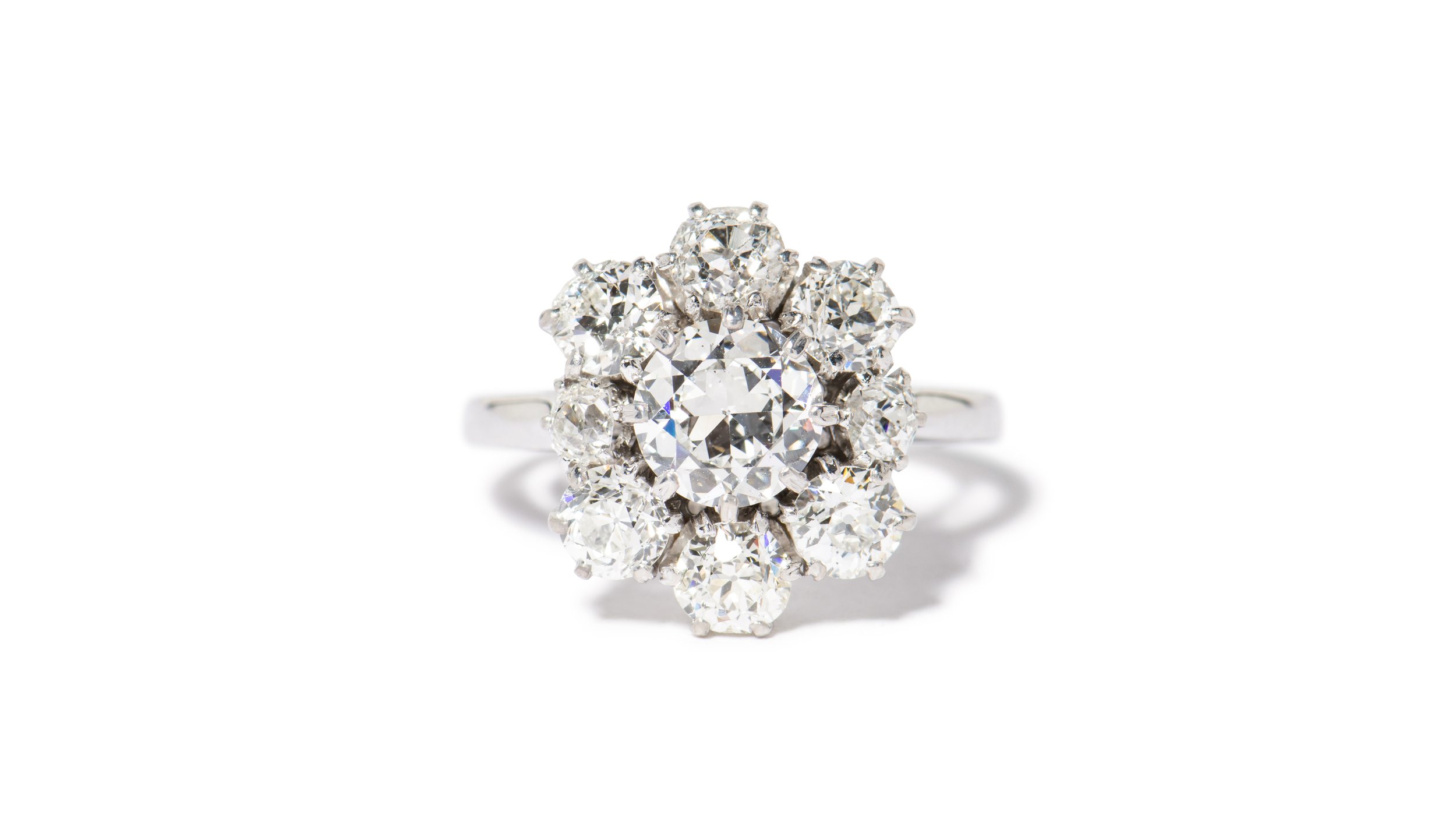

From the 1930s to the 1940s, transitional cut diamonds were most prevalent in jewelry and are a cross between the chunky facets of an Old European Cut diamond and the precision of today's modern round brilliant.
Modern Round Brilliant (late-1900s)
The modern day round brilliant cut diamond came as a result of centuries of diamond cutting evolution and is the direct descendant of the transitional cut diamond. To the naked eye, many of these vintage diamond cuts may look similar, but there are a number of distinct differences between them; most importantly the shape, placement, and number of facets that alter the character and brilliance of the stone. The modern round brilliant was fully standardized in the early 1950s with 57 facets, eliminating the open culet facet of the transition, Old Euro and Old Mine cuts.
The modern round diamond, also simply known as the round brilliant, is the most popular diamond shape on the market, representing seventy-five percent of diamonds sold today. The diamond is prized for its brightness and brilliance, making it one of the more sparkly diamond cuts on the market. The round cut is excellent for reflecting light and dispelling color, meaning they maintain the same aesthetic appeal even with lower clarity and color ratings.
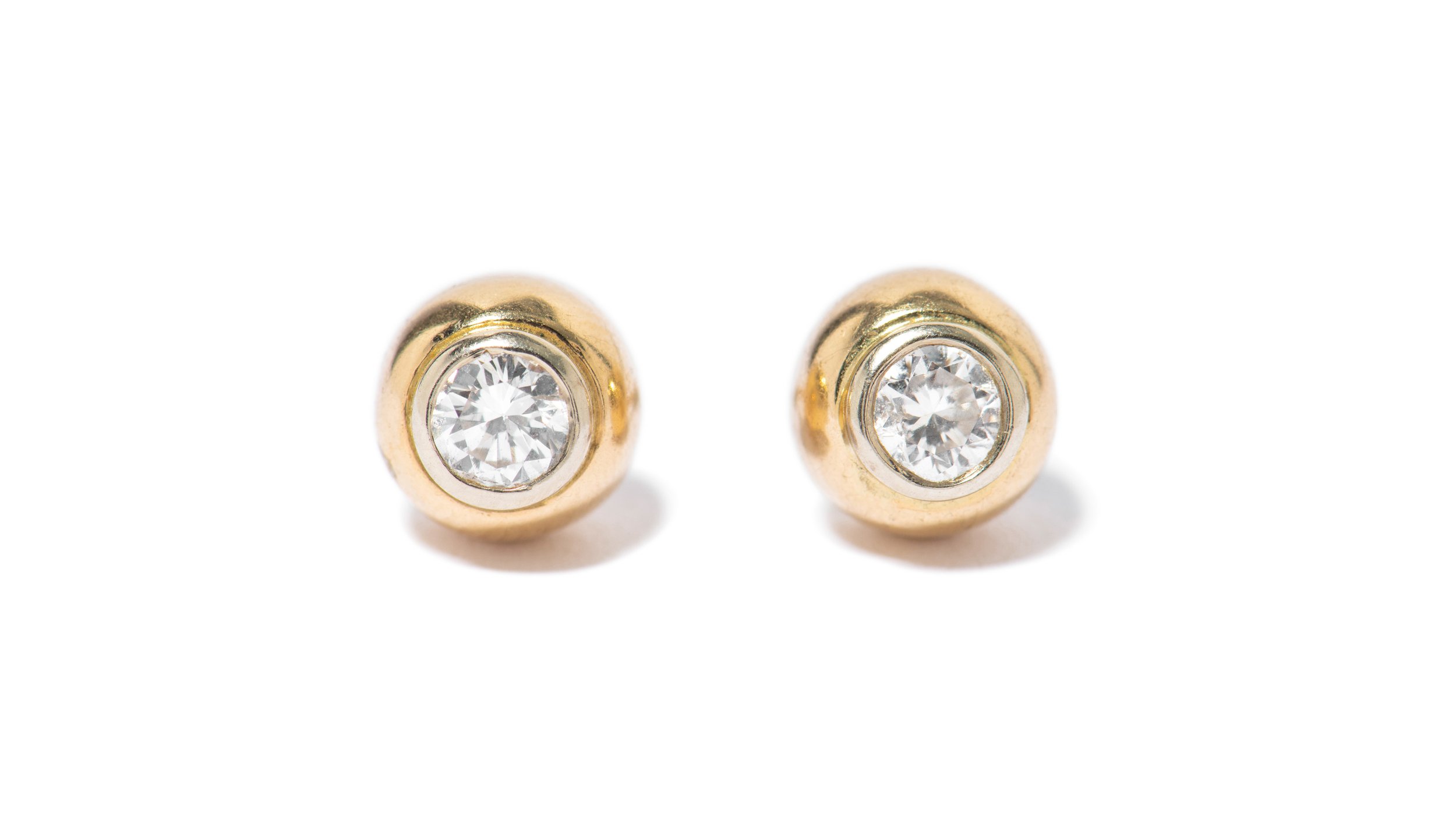
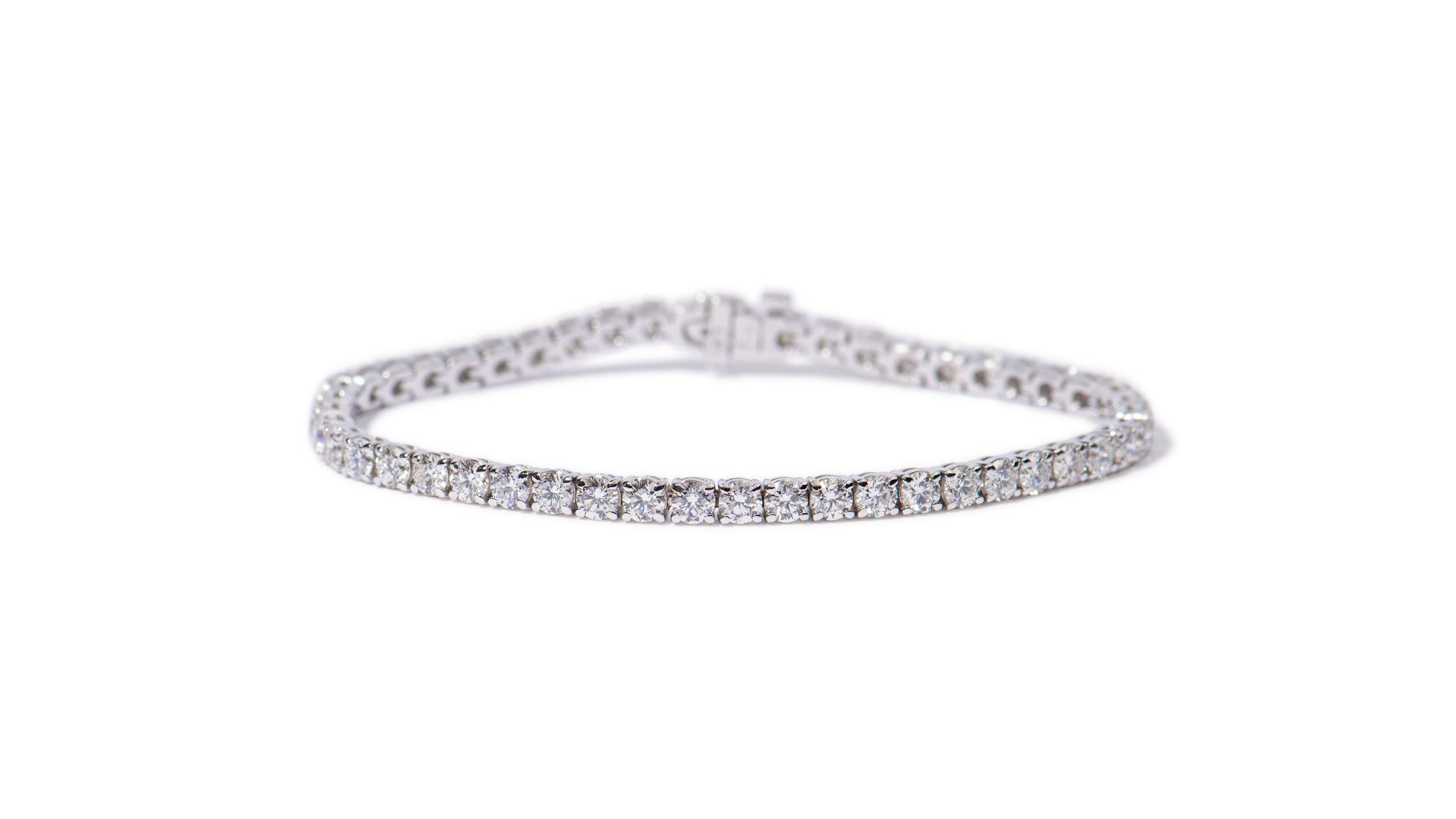
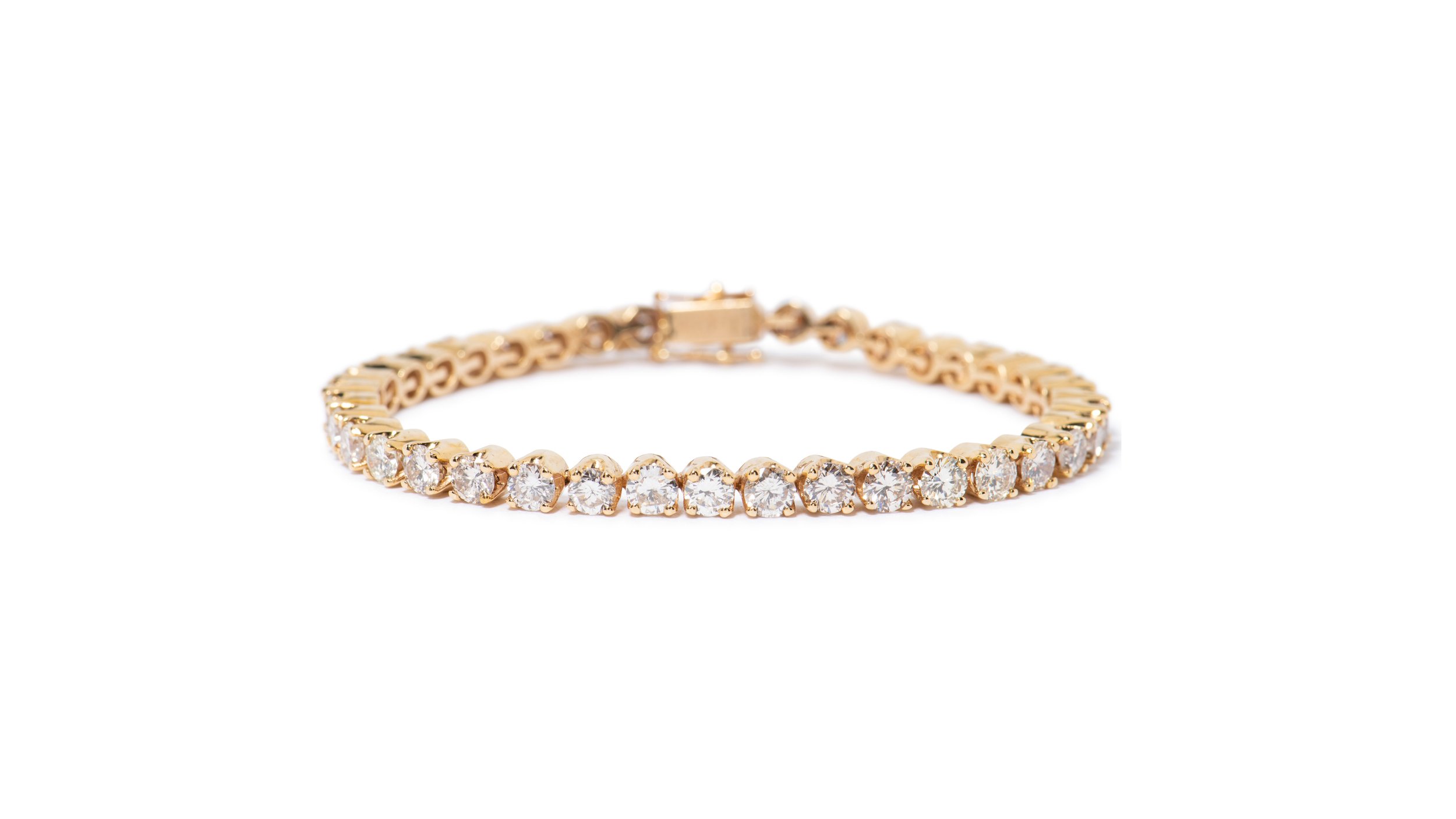
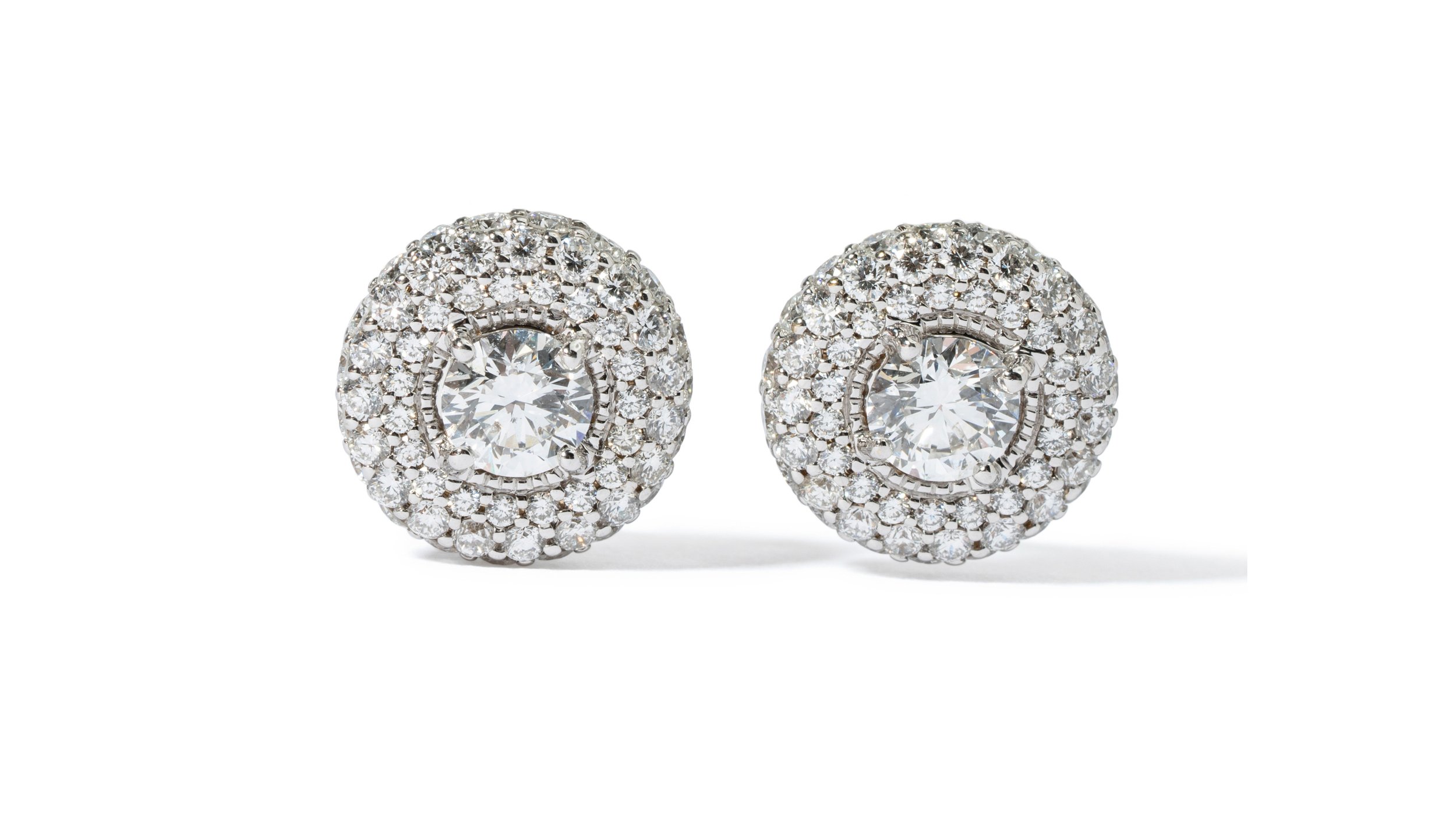
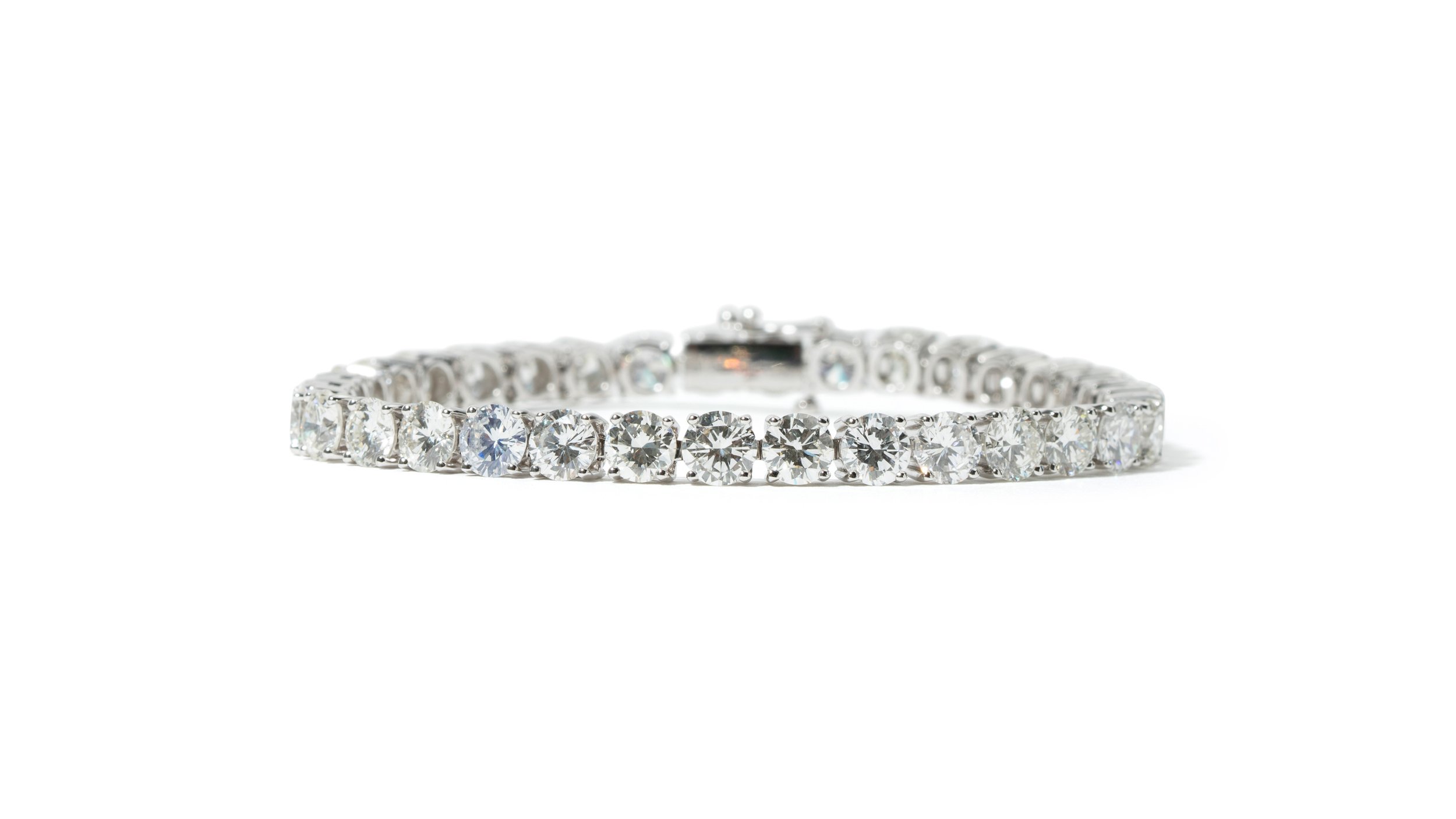
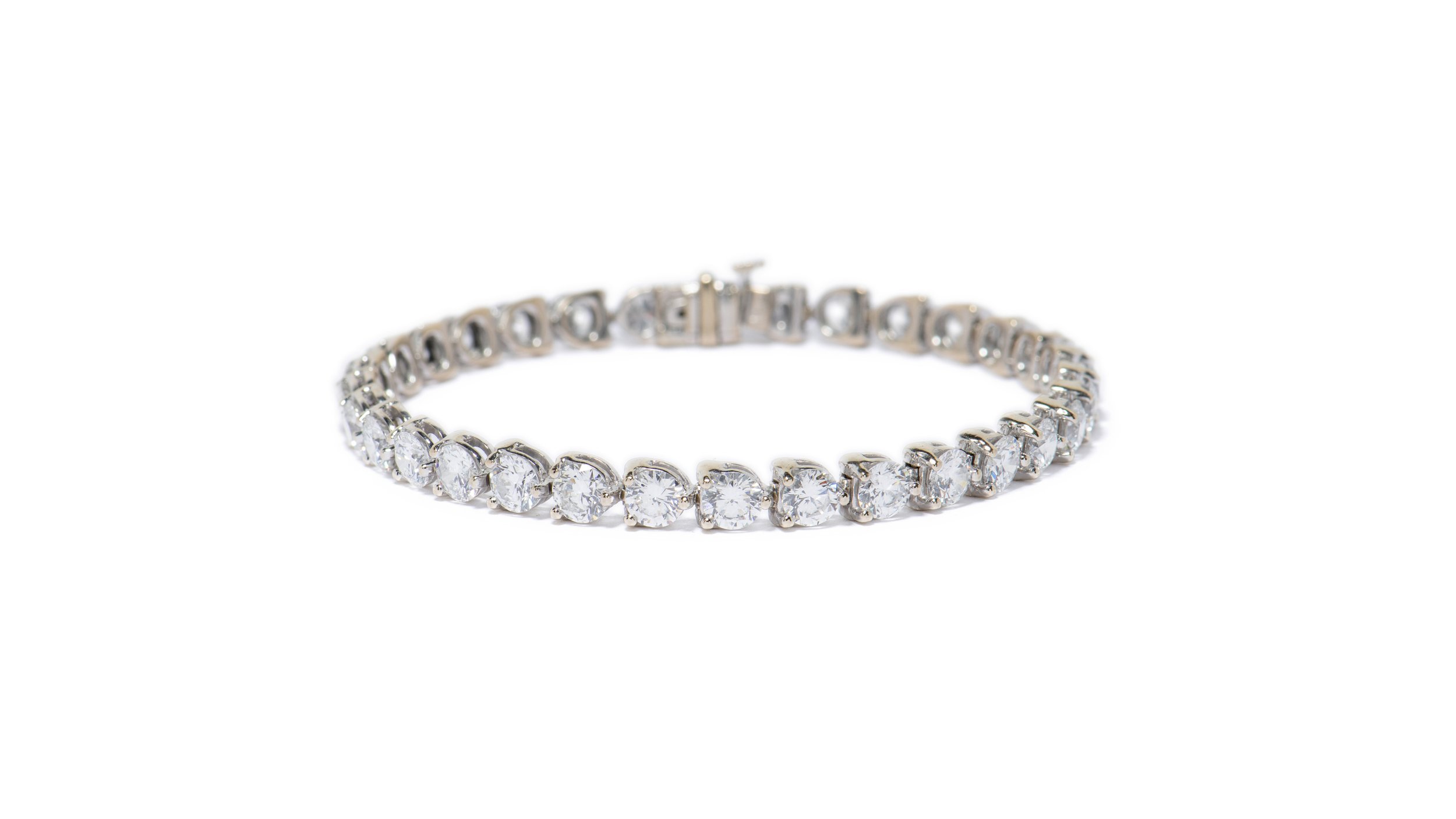
To inquire about our Modern Round Brilliant diamond jewelry, contact Windsor Jewelers, Inc. at 212.262.0500 or info@windsorjewelers.com.
What to Consider When Buying Old Cut Diamonds
The purchase of an old diamond requires special consideration. Each has unique characteristics distinctly different from modern diamonds, including larger facets, asymmetrical outlines and warmer color grades. To purveyors of heirloom jewelry, these differences define the beauty and charm of old diamonds.
Use due diligence, examine the diamond grading report and analyze the color and clarity to ensure that you pay fair market value. When evaluating an old cut diamond, cut grade and symmetry are far less significant and it’s important to remember, at the end of the day, you aren’t buying a piece of paper. Keep your particular taste in mind and follow your heart while purchasing antique cut diamonds.
To see more old cut diamond jewelry, contact Windsor Jewelers, Inc. at 212.262.0500 or info@windsorjewelers.com.
Next on the blog…
Join us on a captivating journey through the Victorian era's exquisite jewelry. Marked by the reign of Queen Victoria, a monarch who left an indelible impact on society and style alike, the Victorian era was a time of immense change as art, culture, and fashion intertwined to create a distinctive aesthetic. From delicate lockets to intricate cameos, these pieces are more than adornments; they're windows into history. Read the article here.


